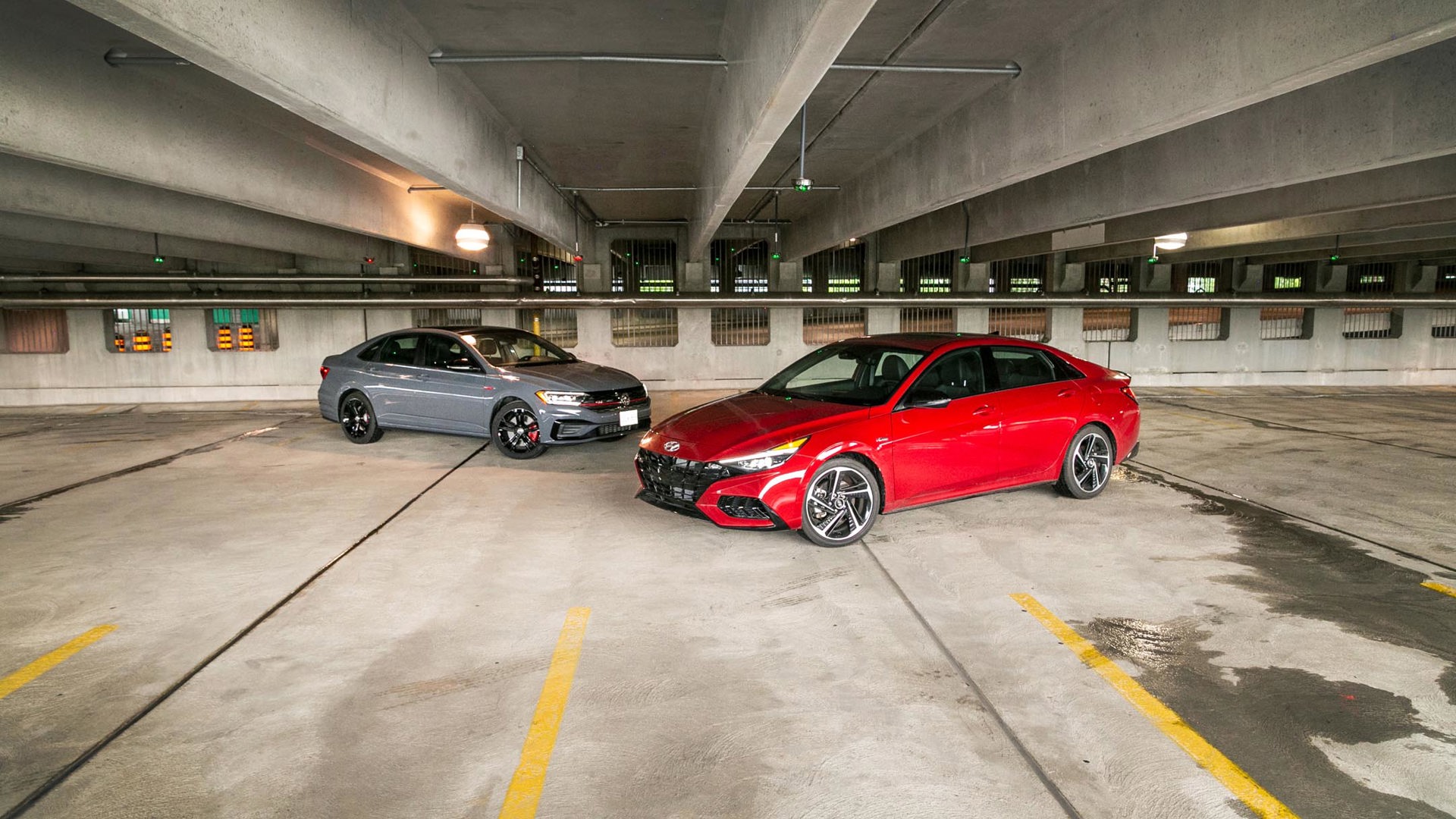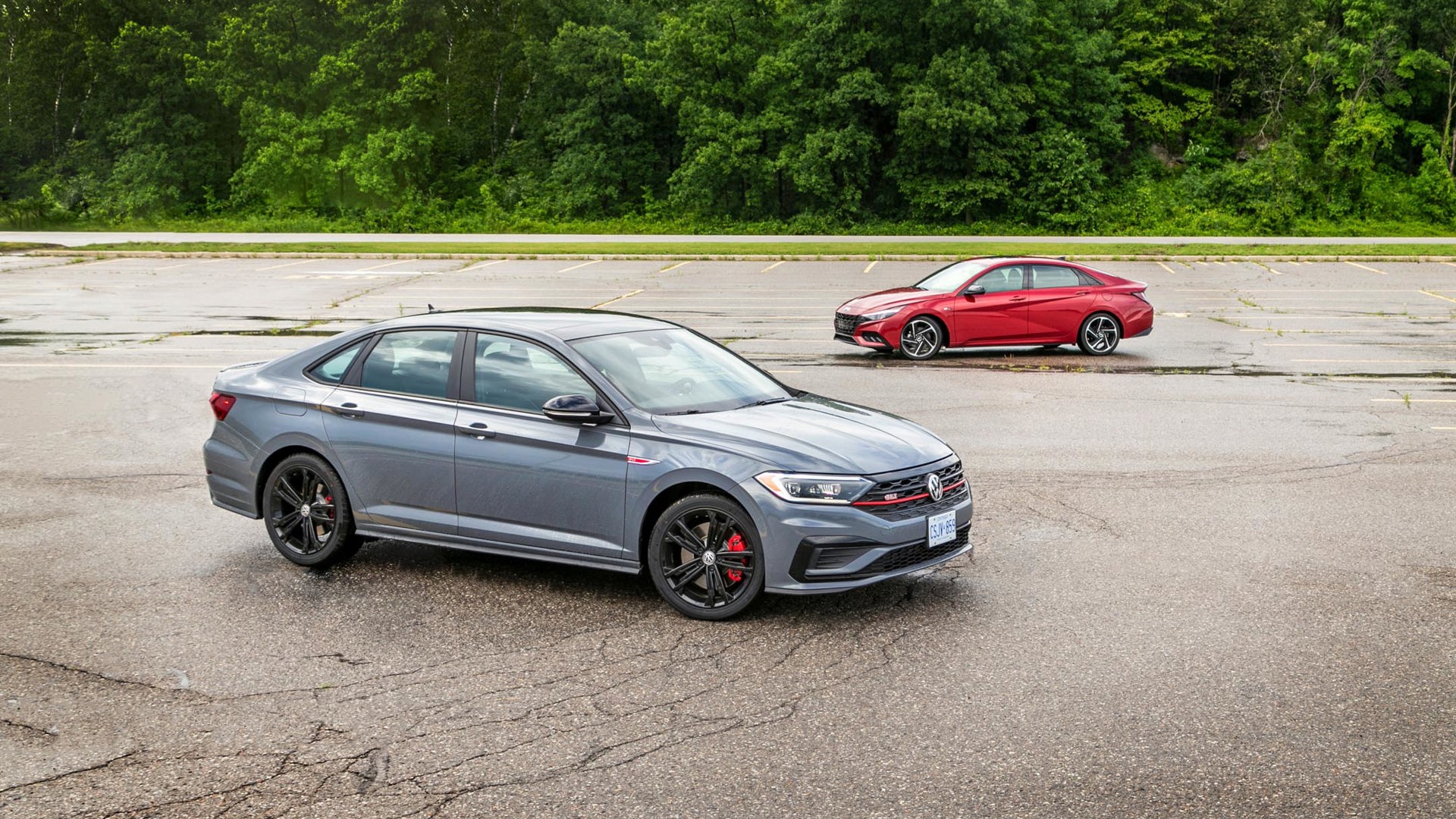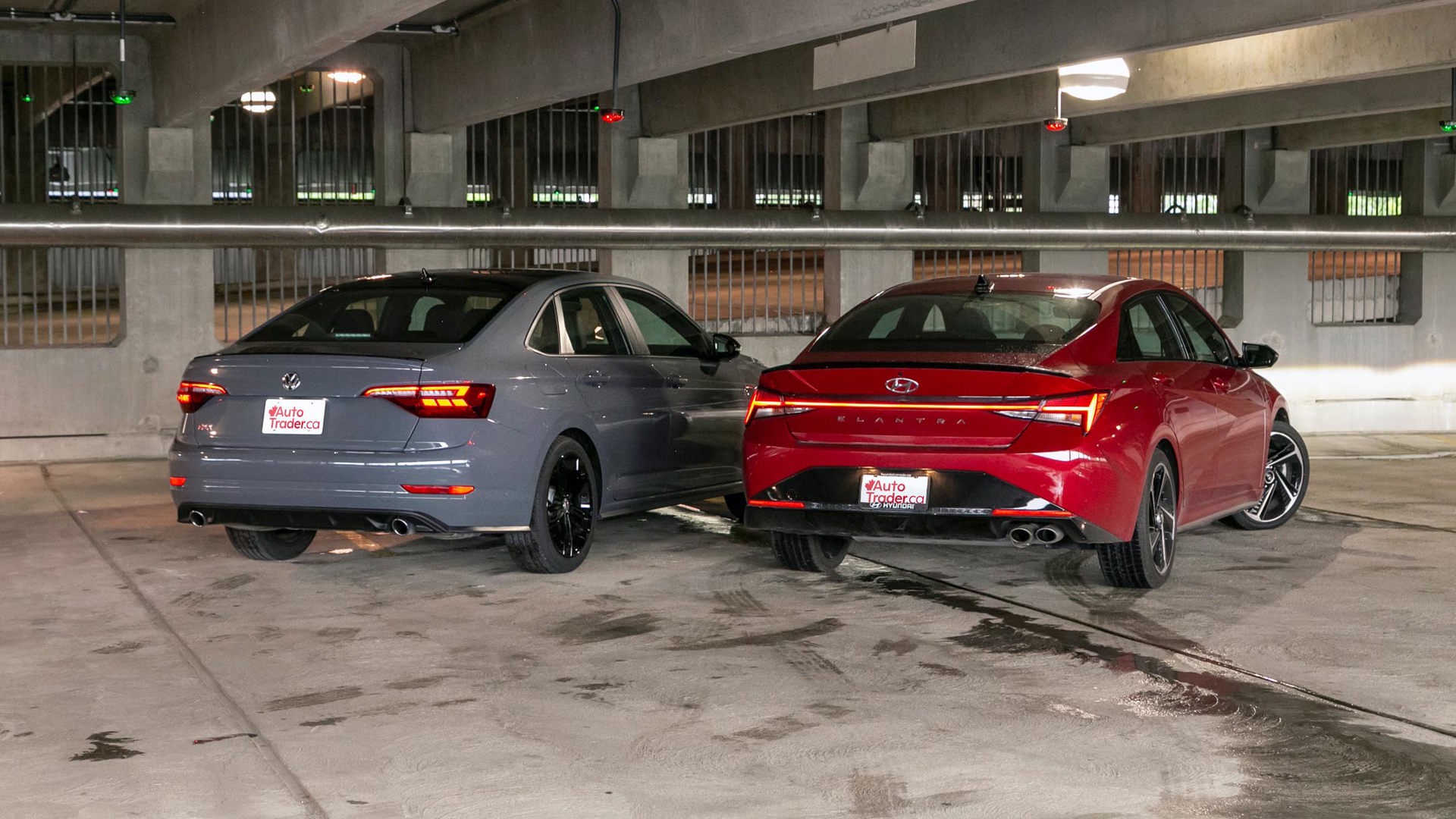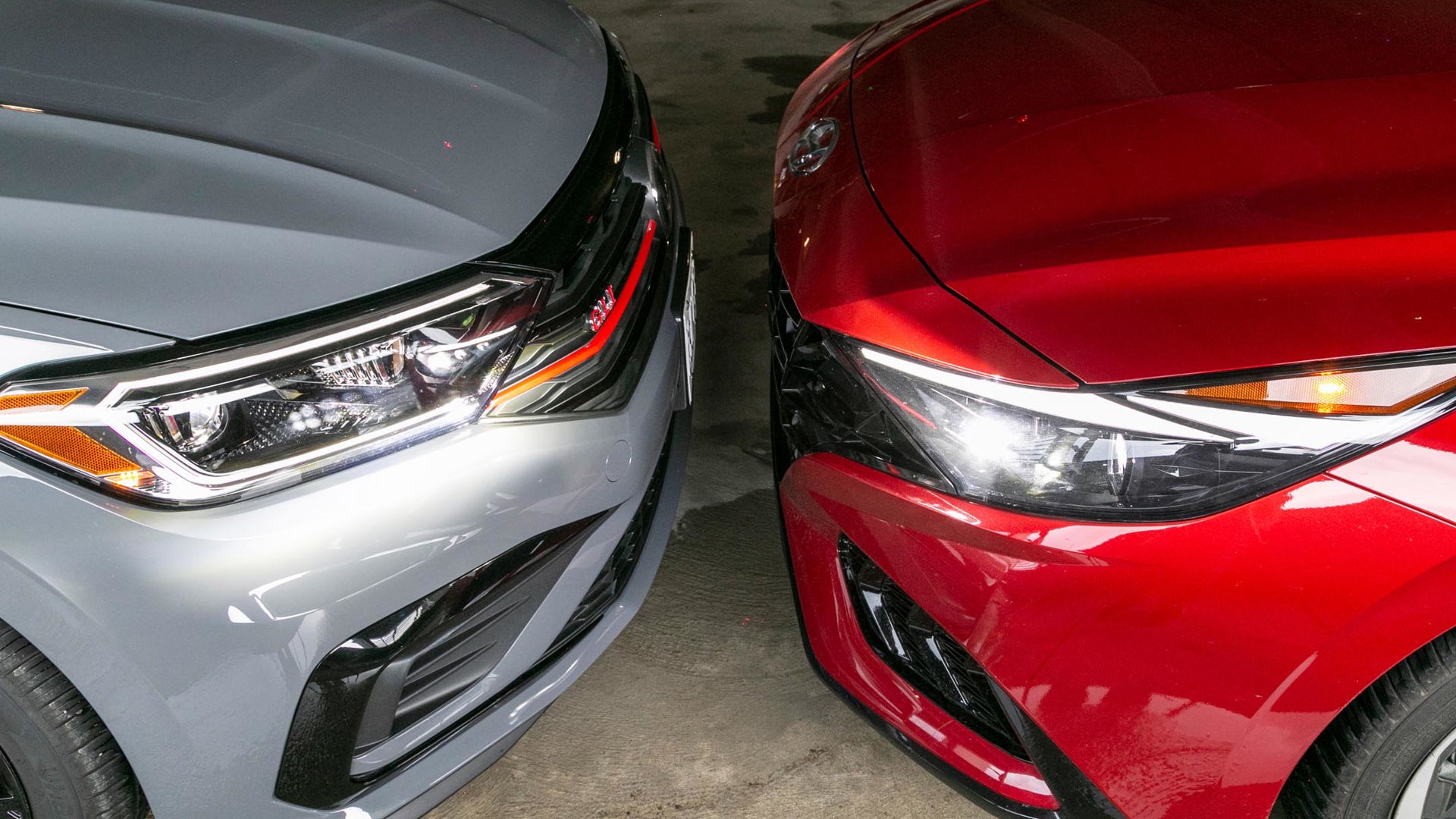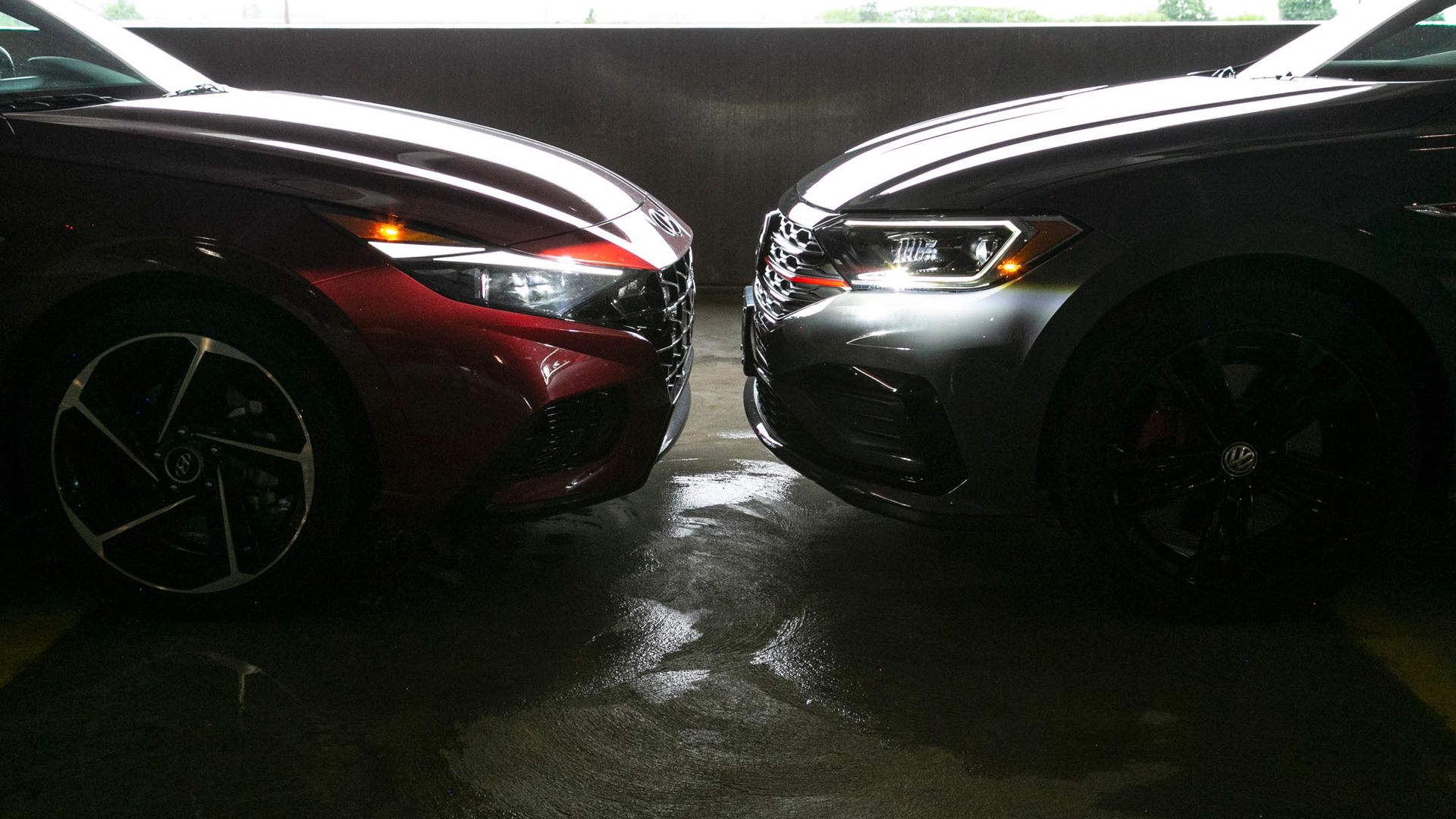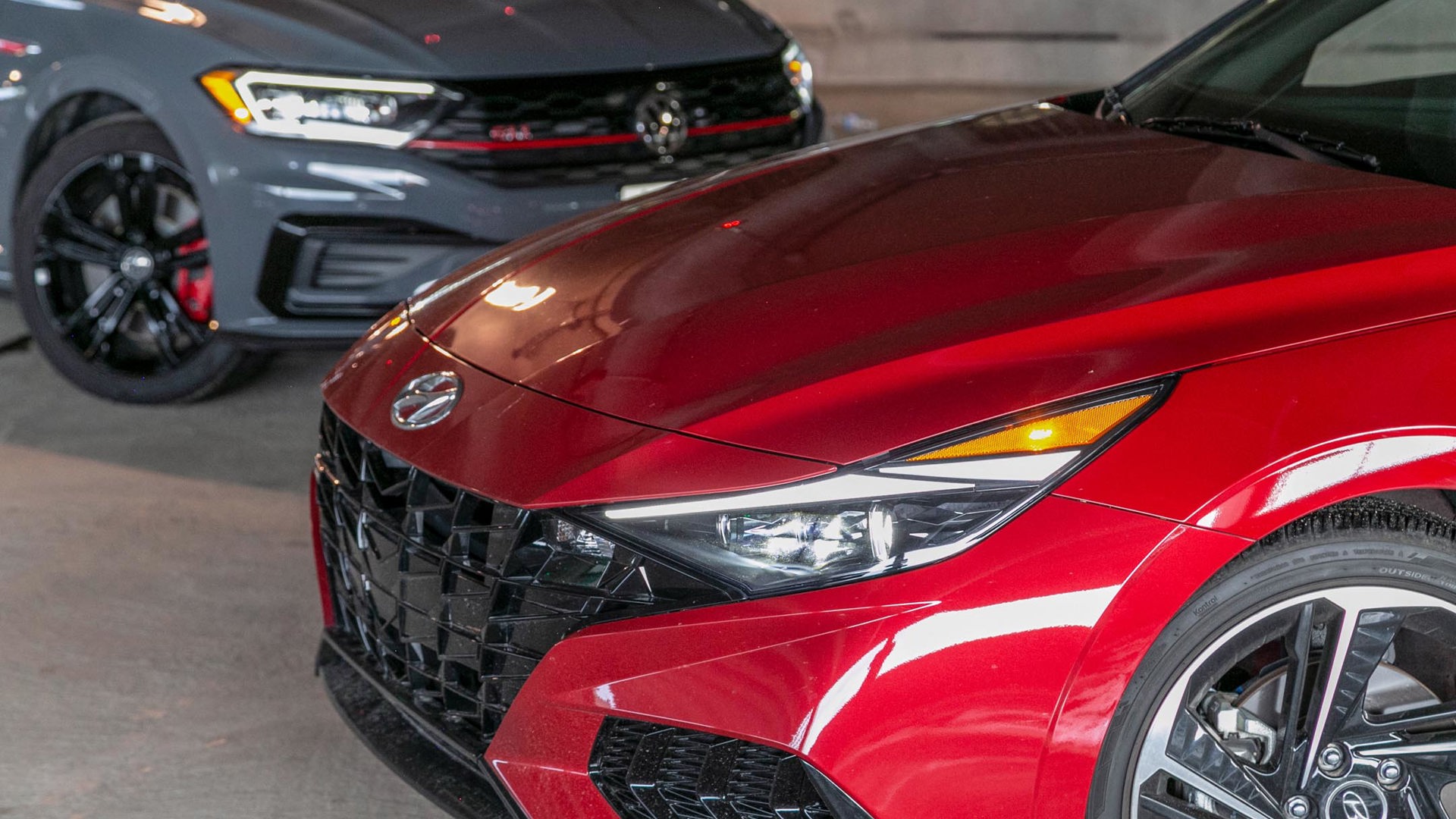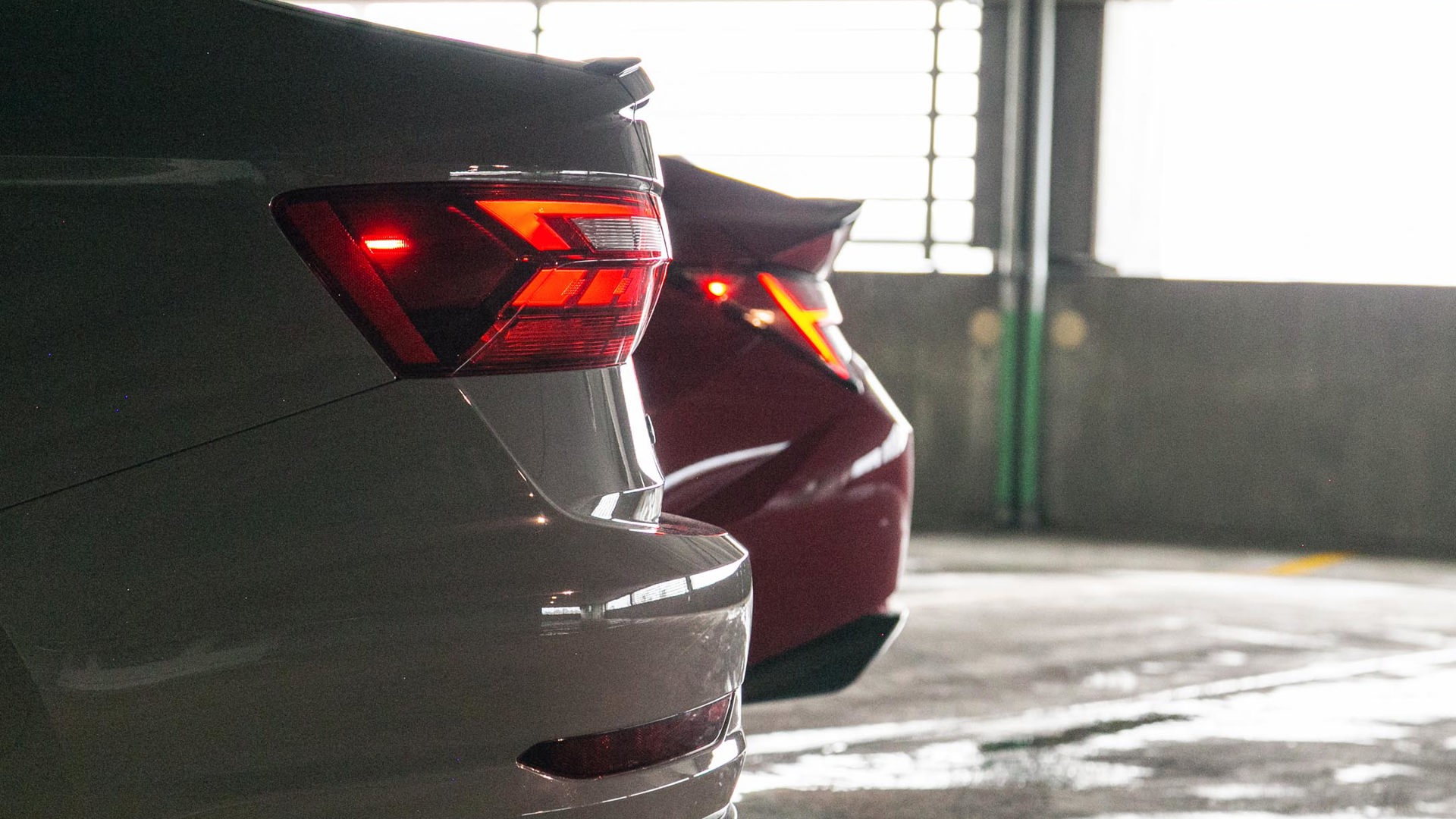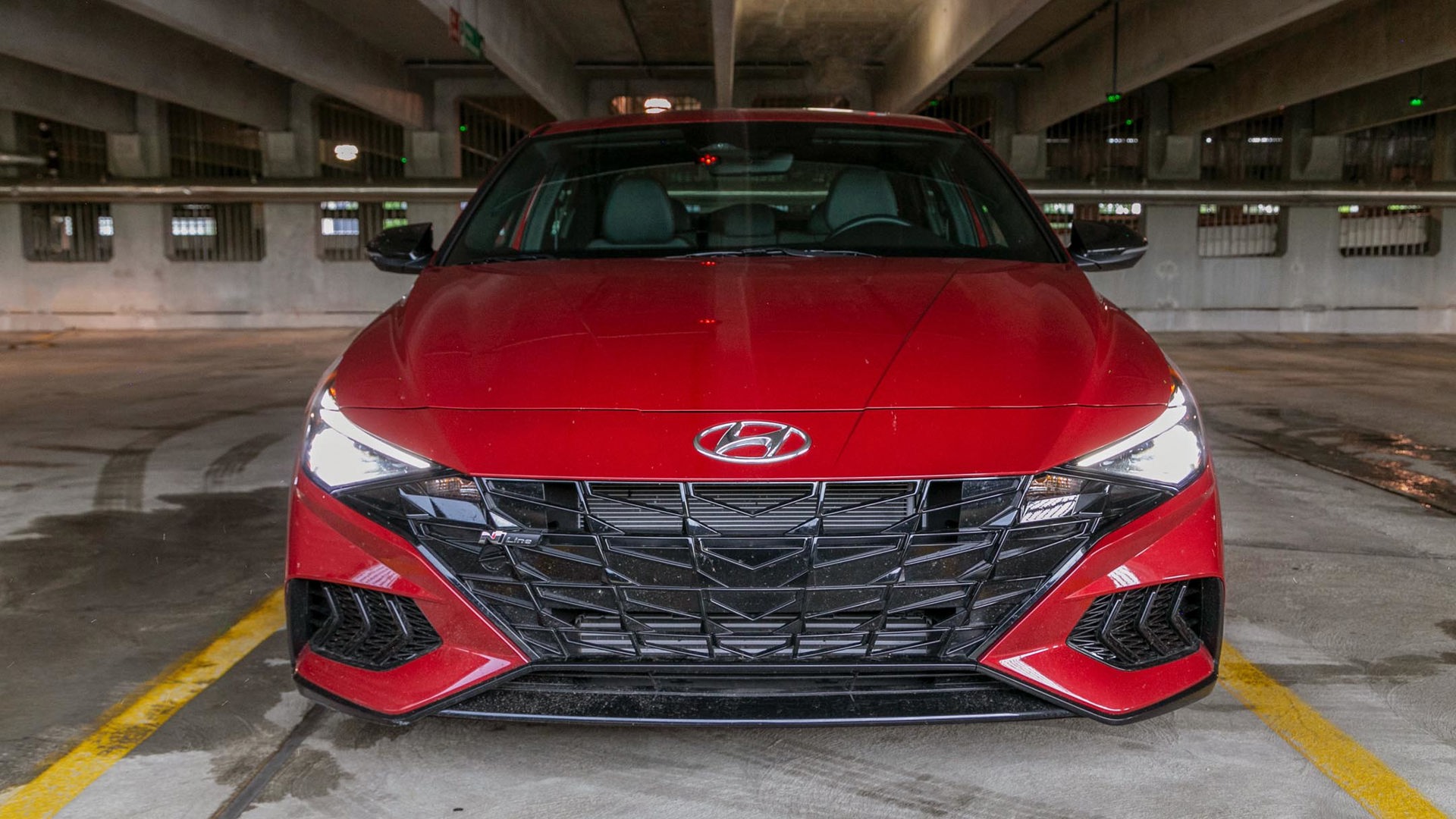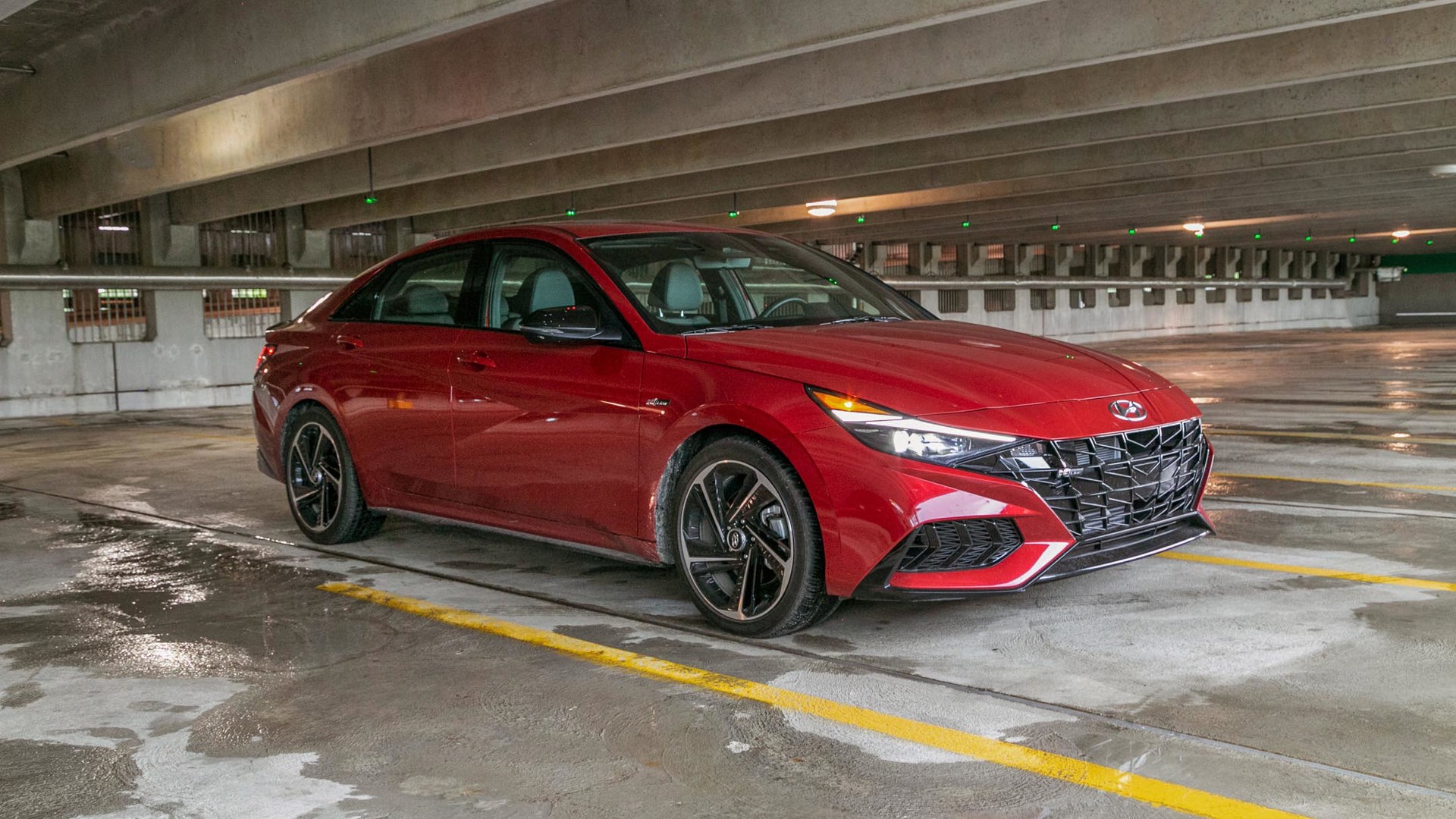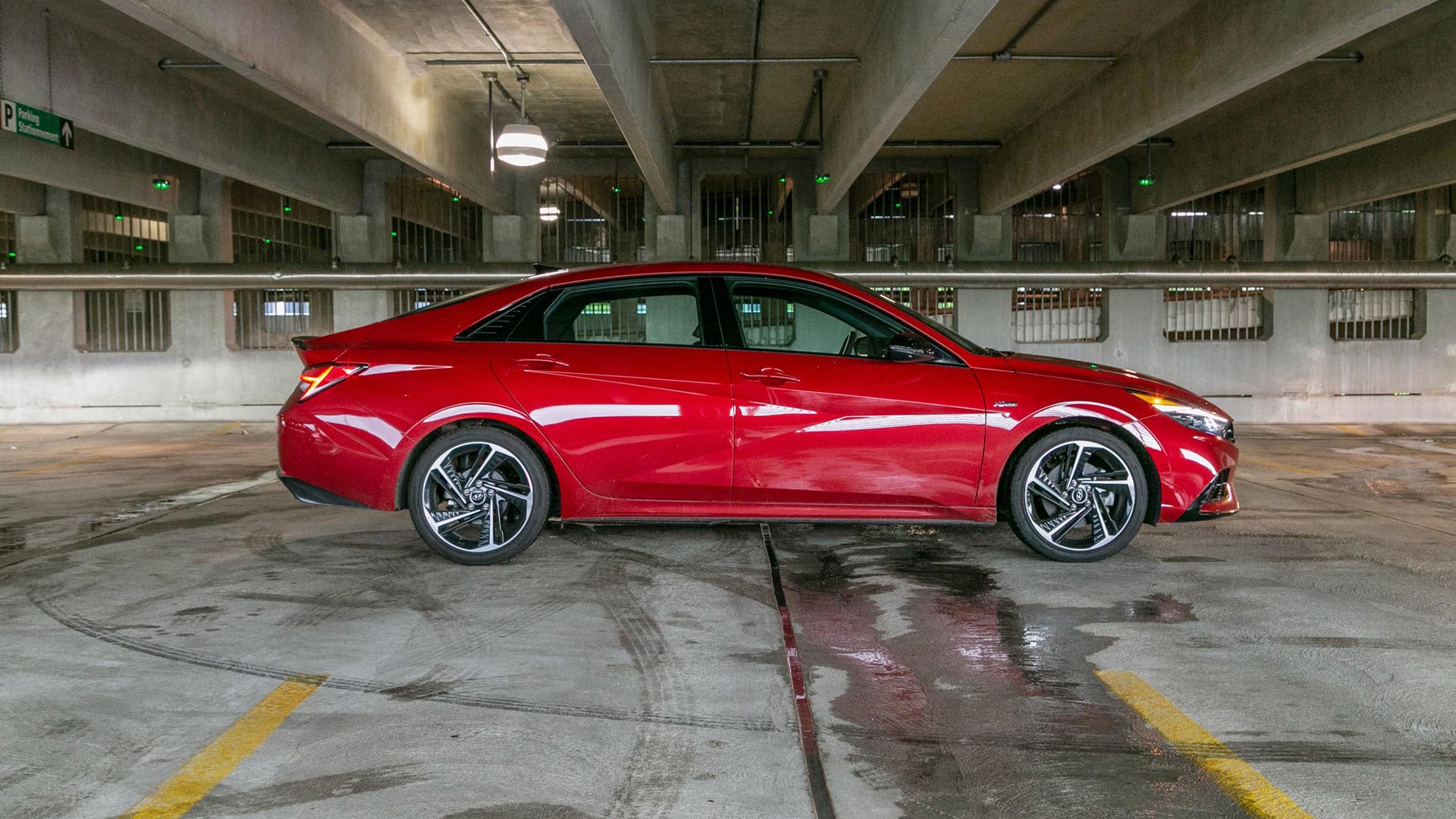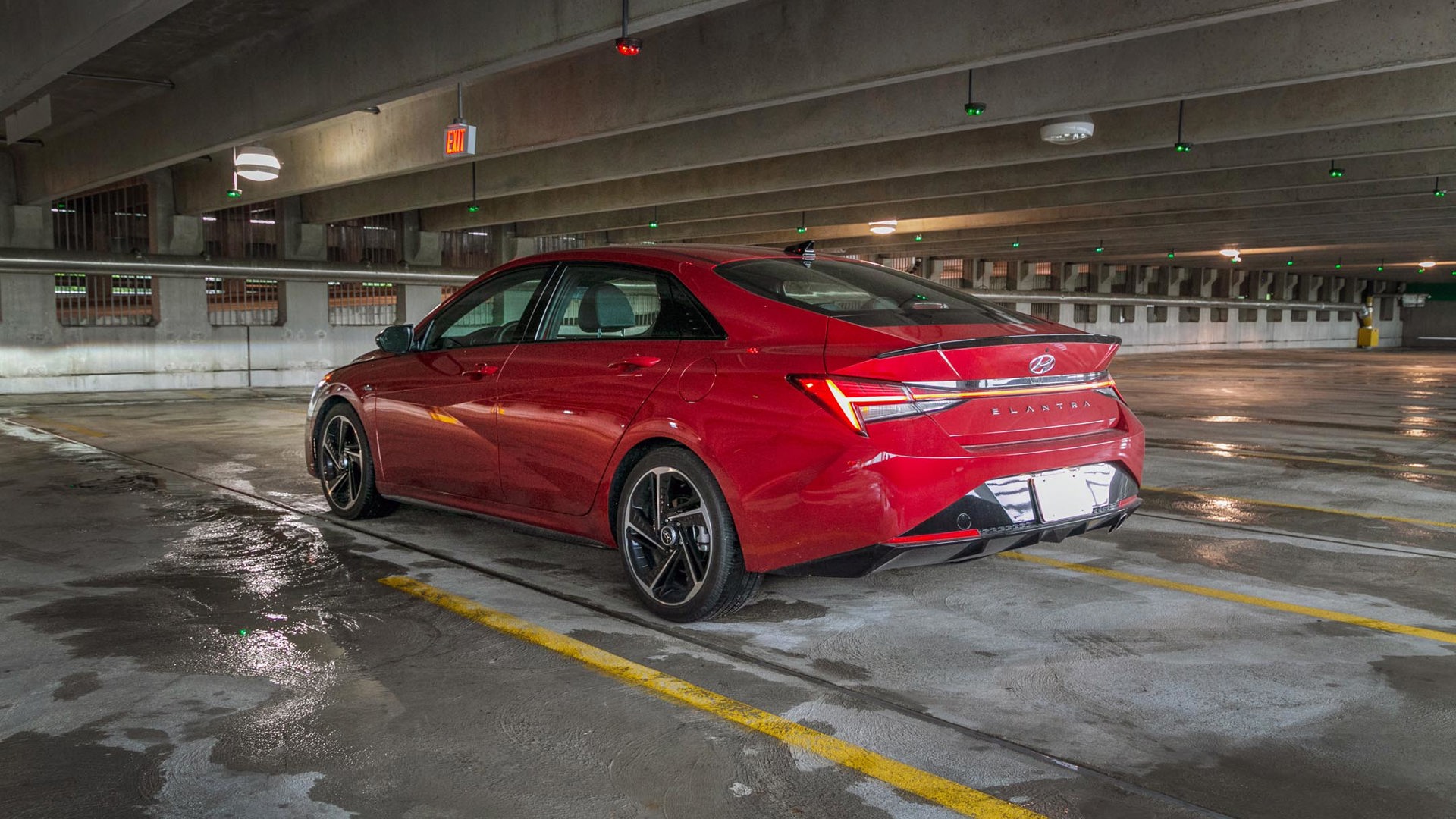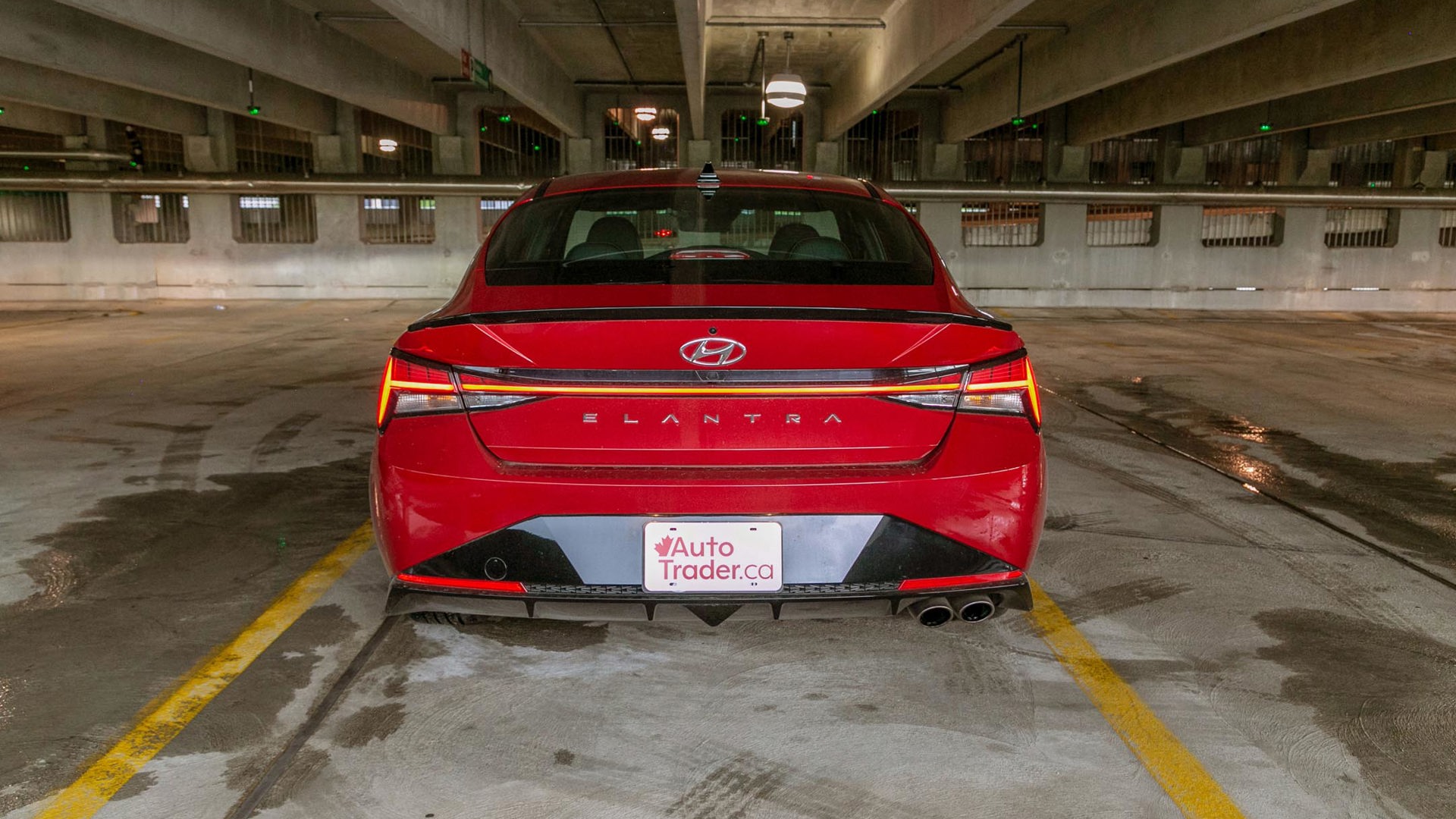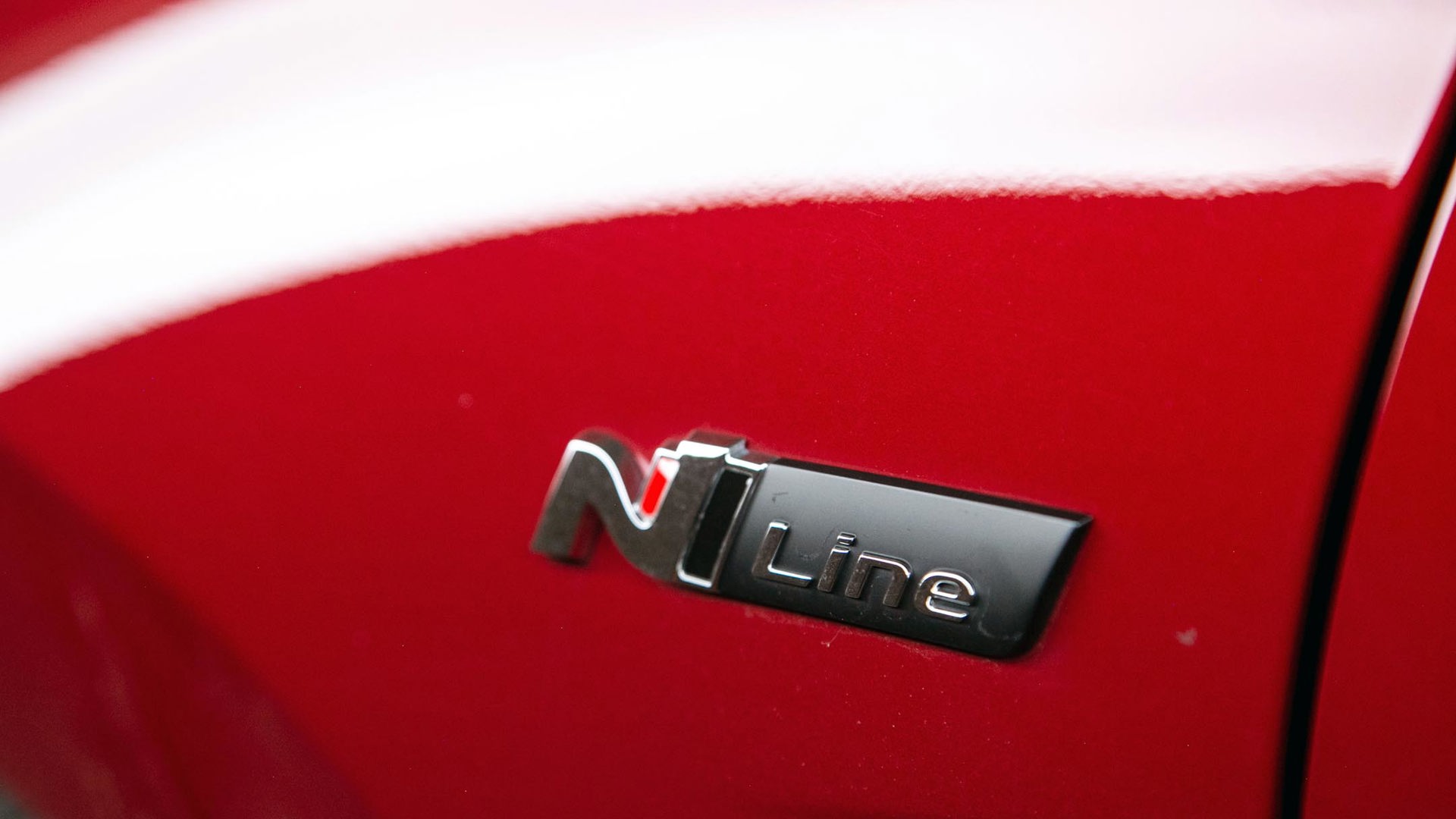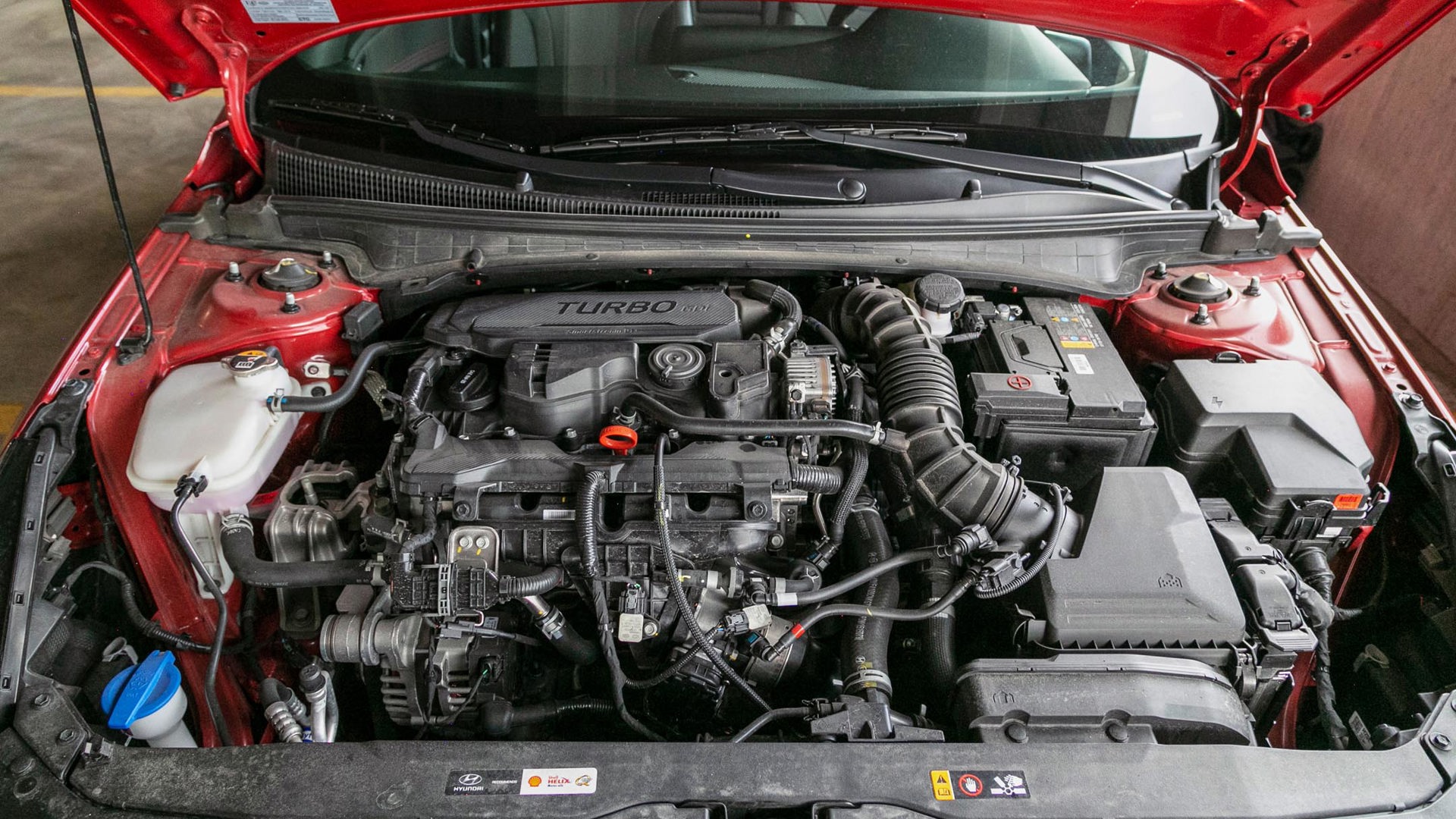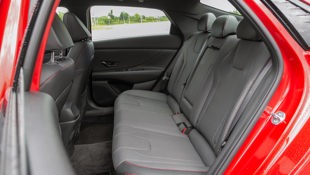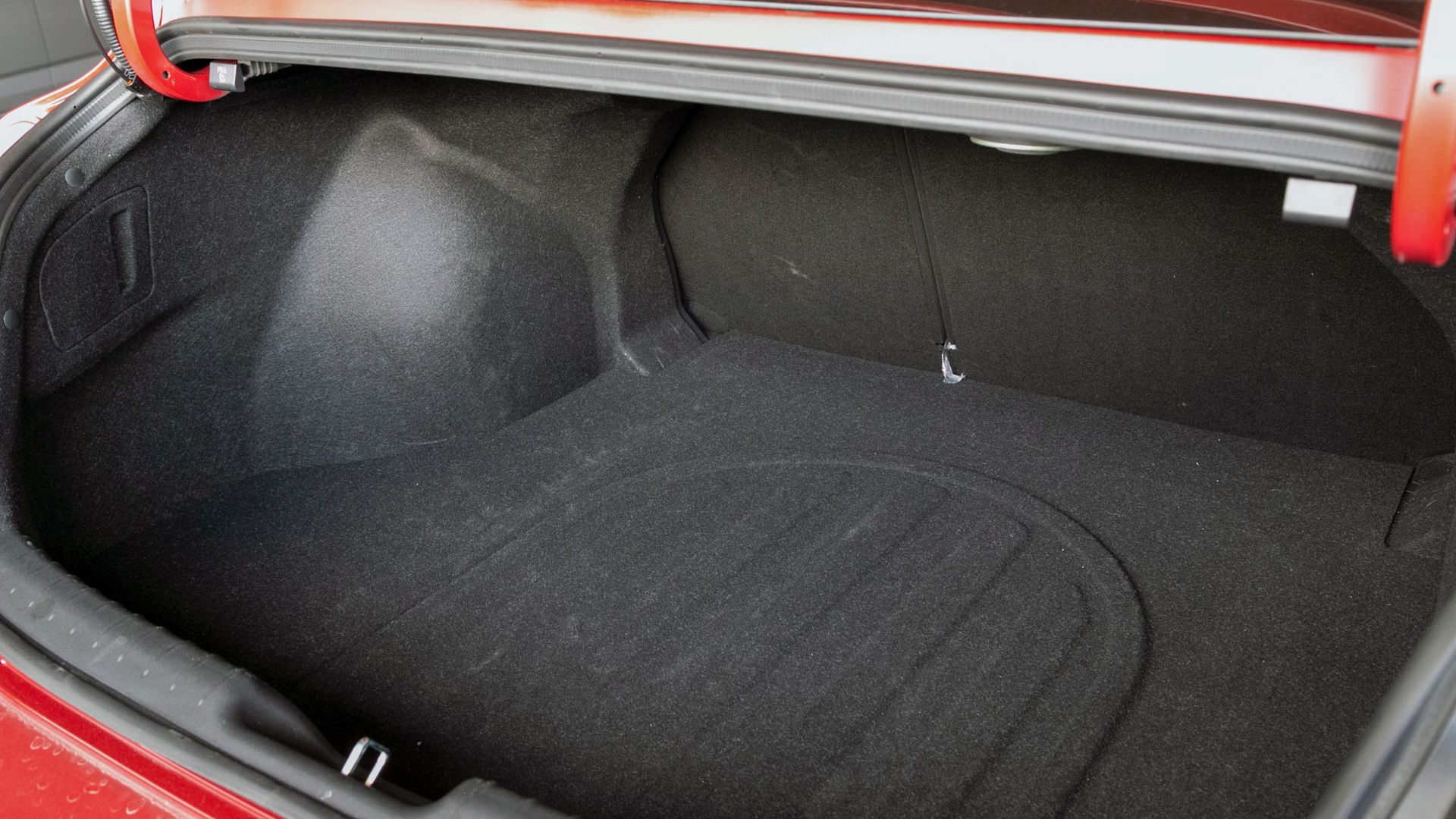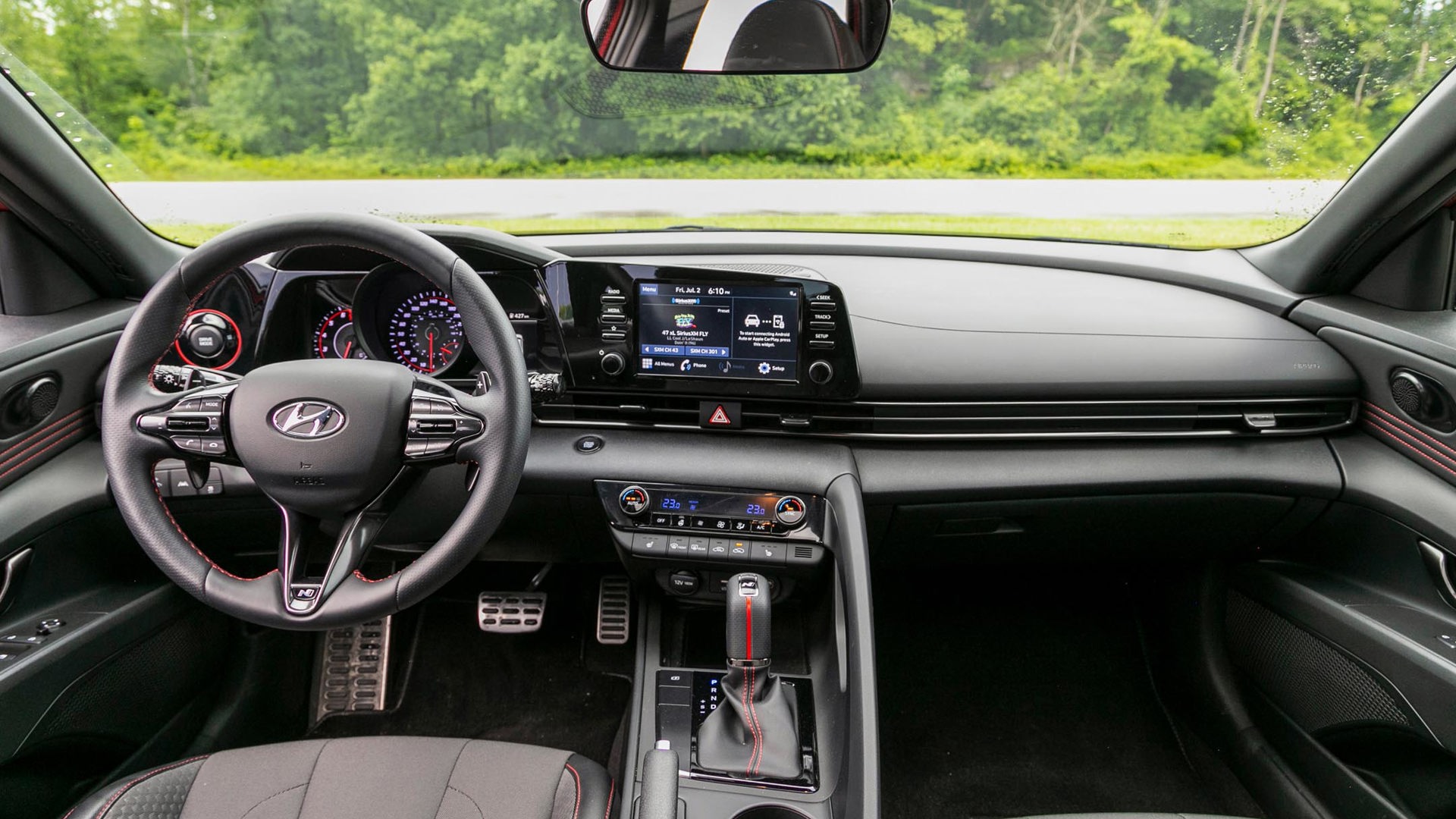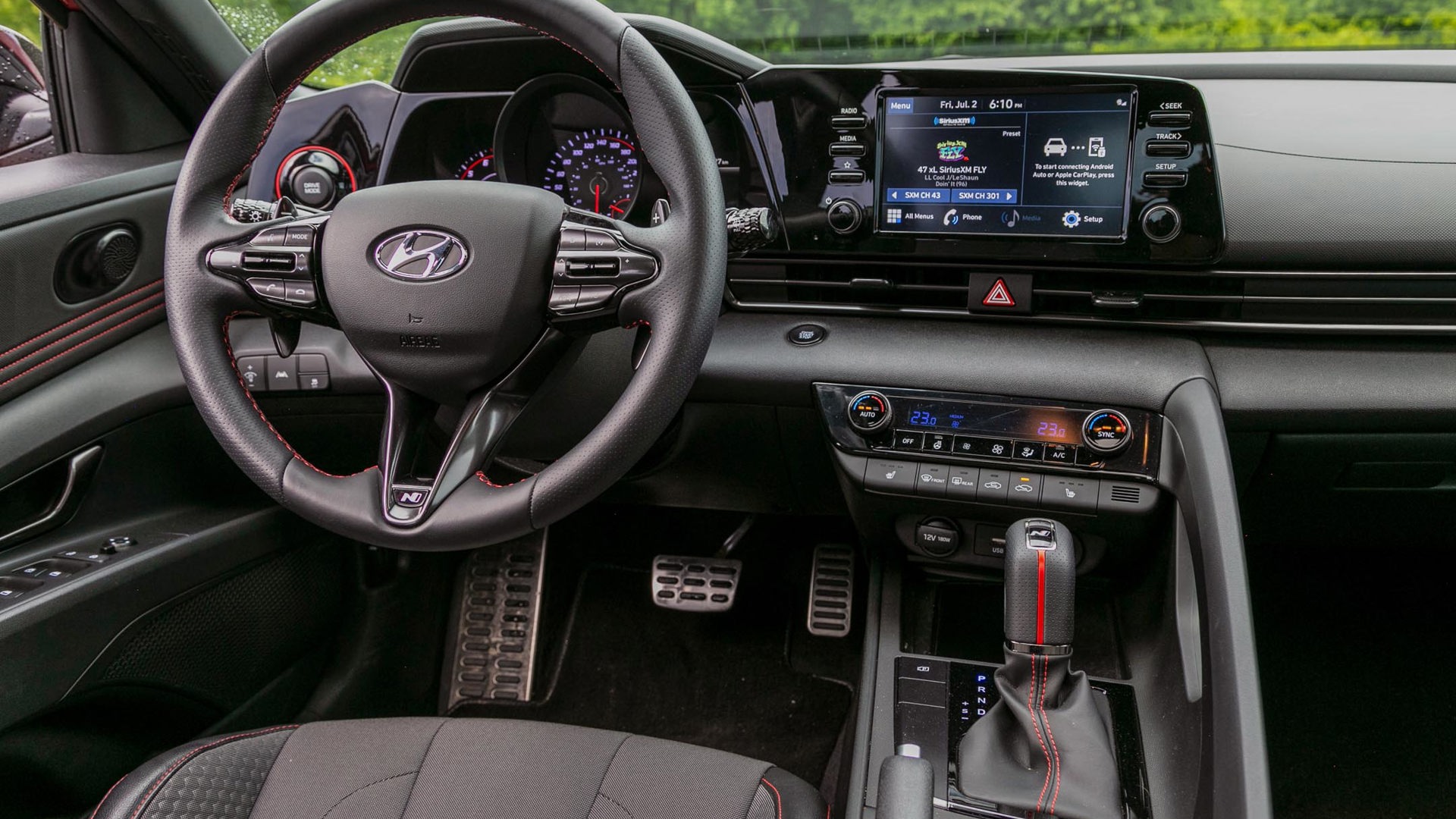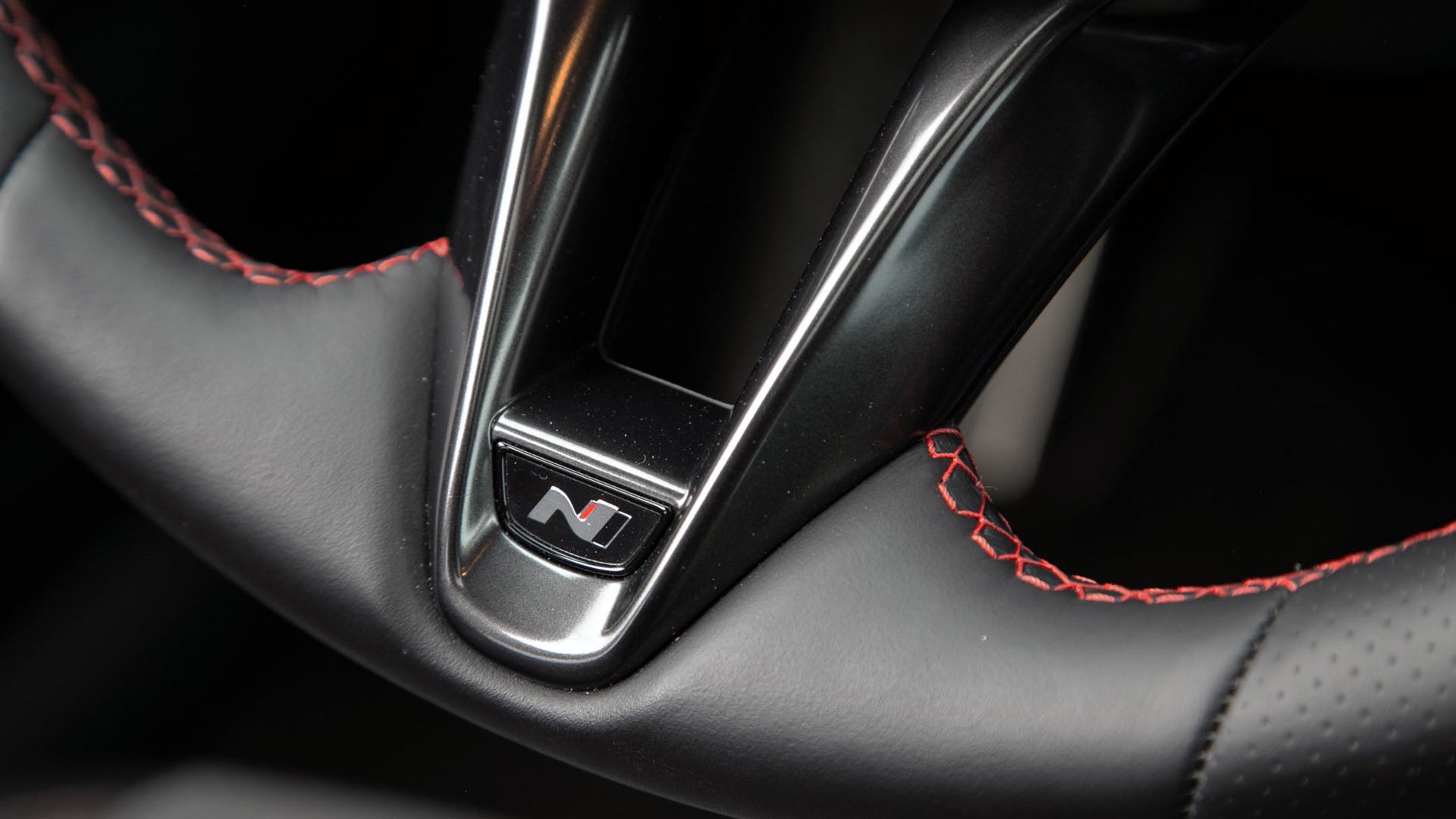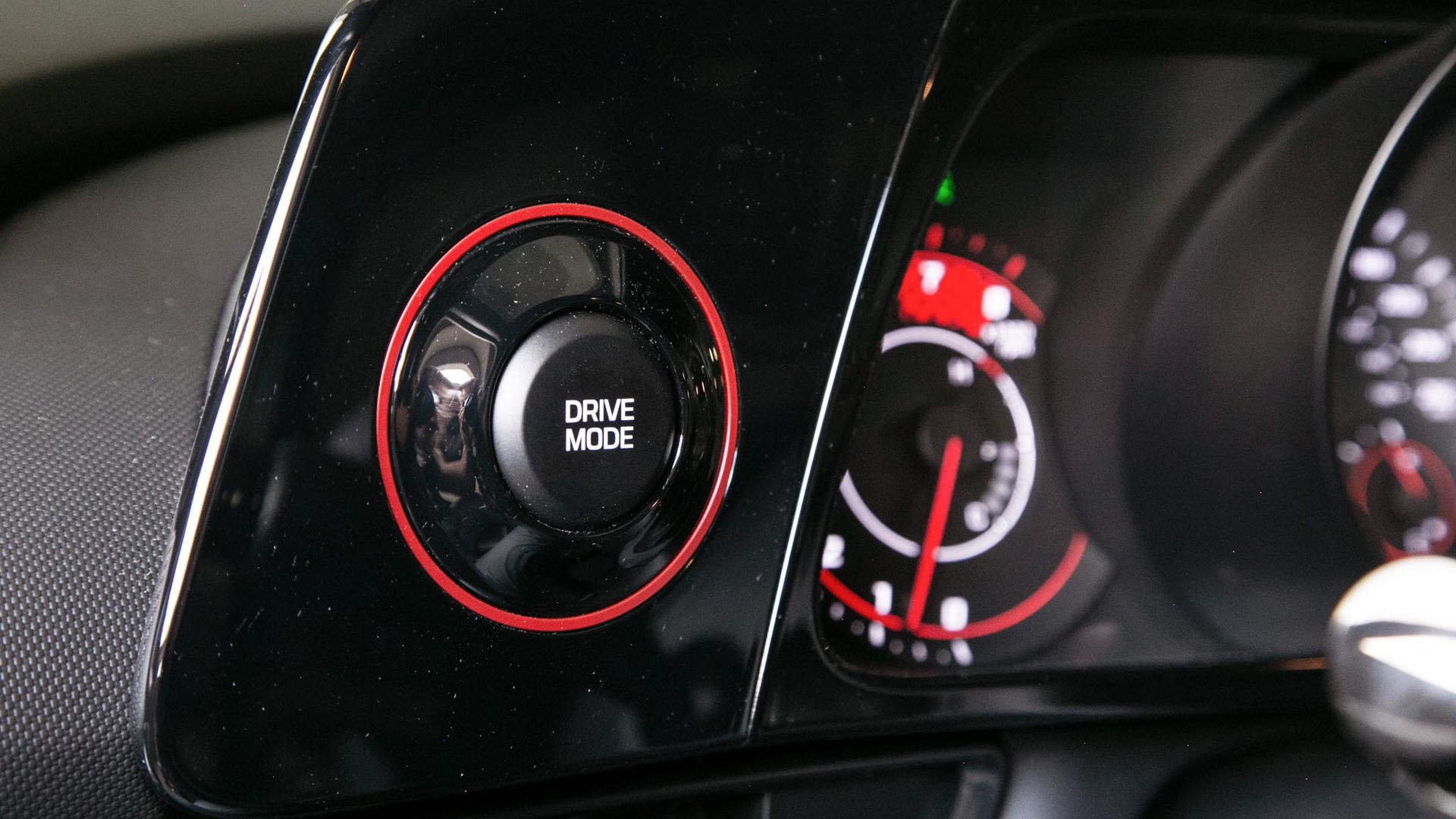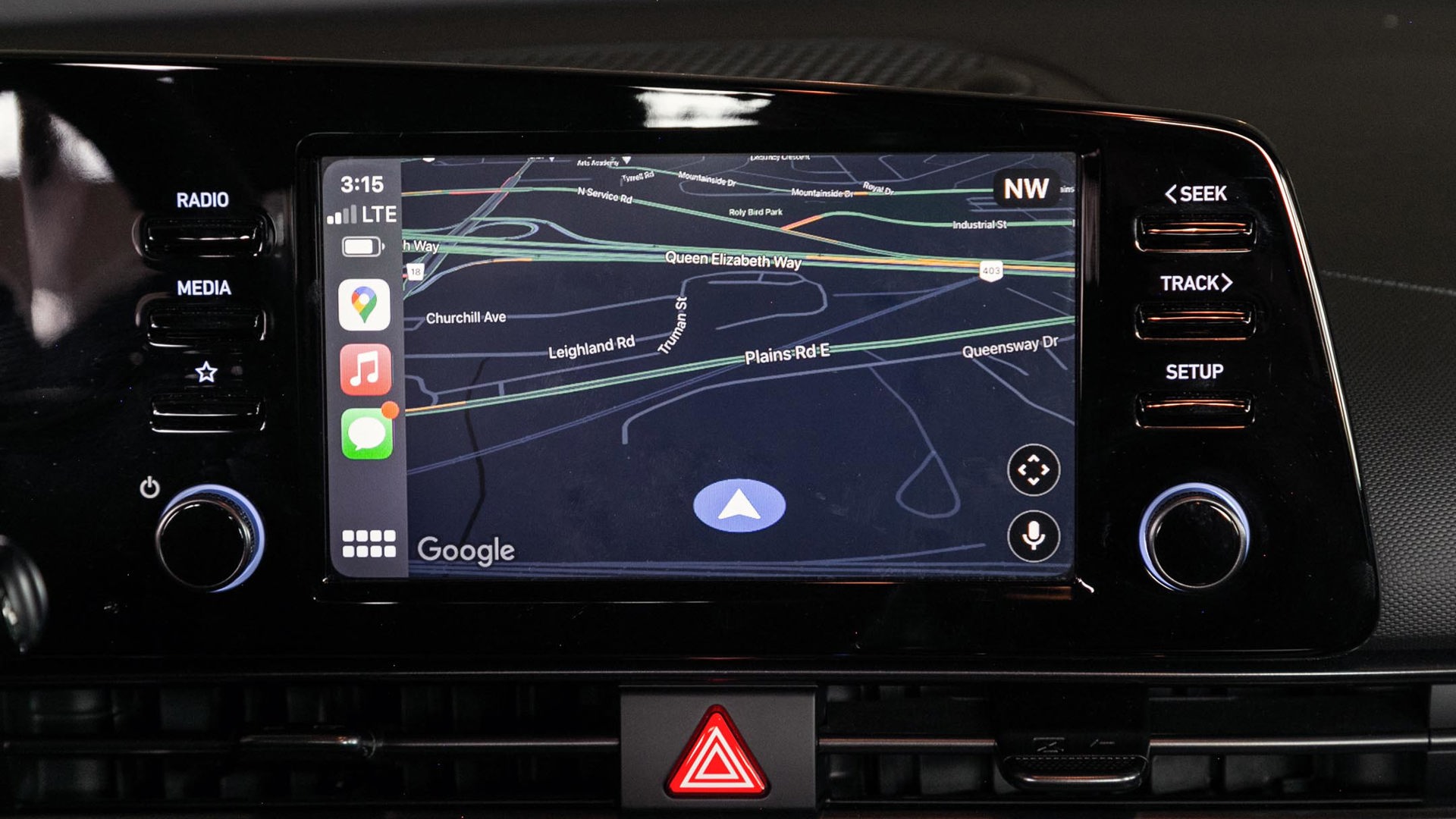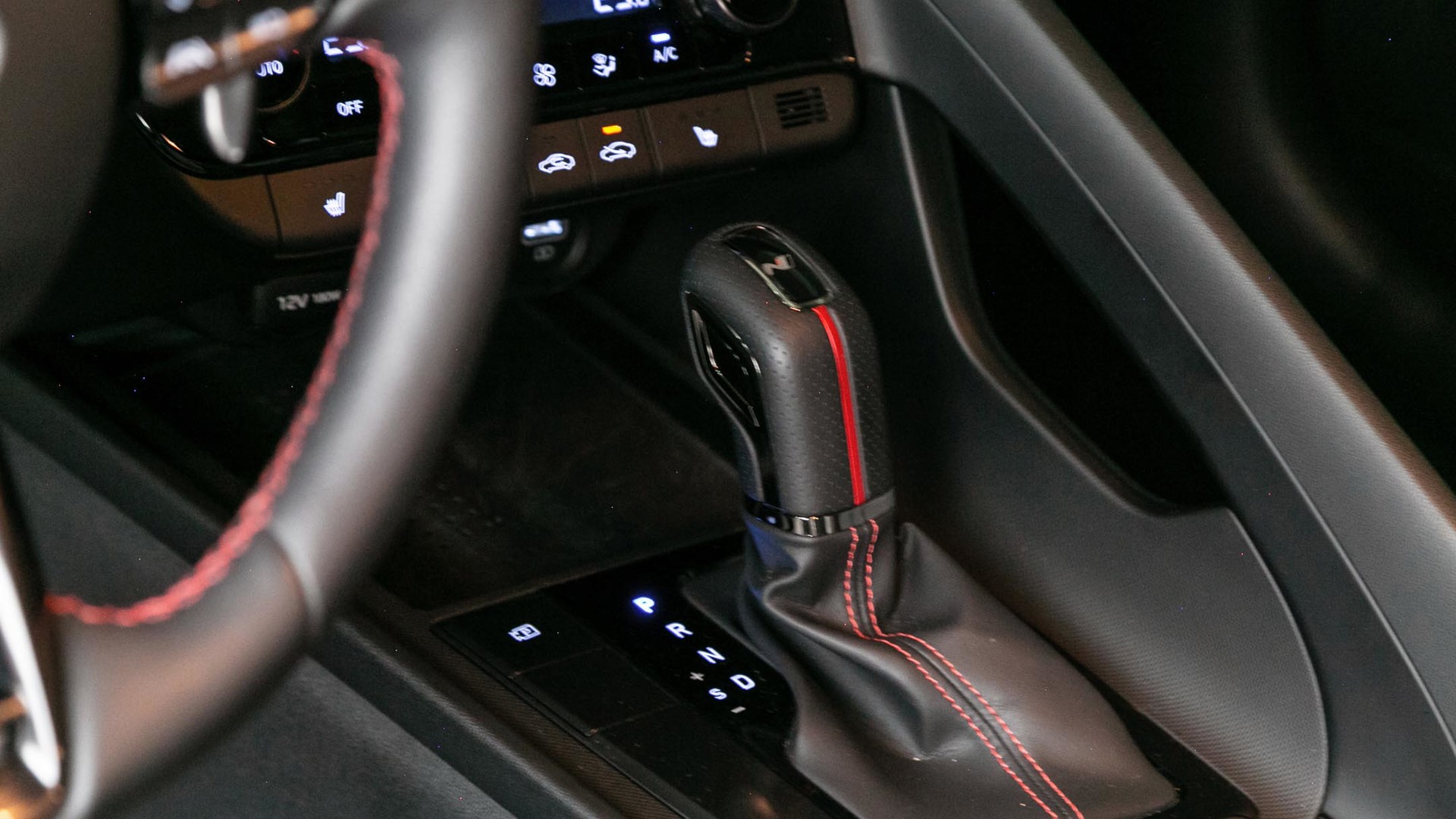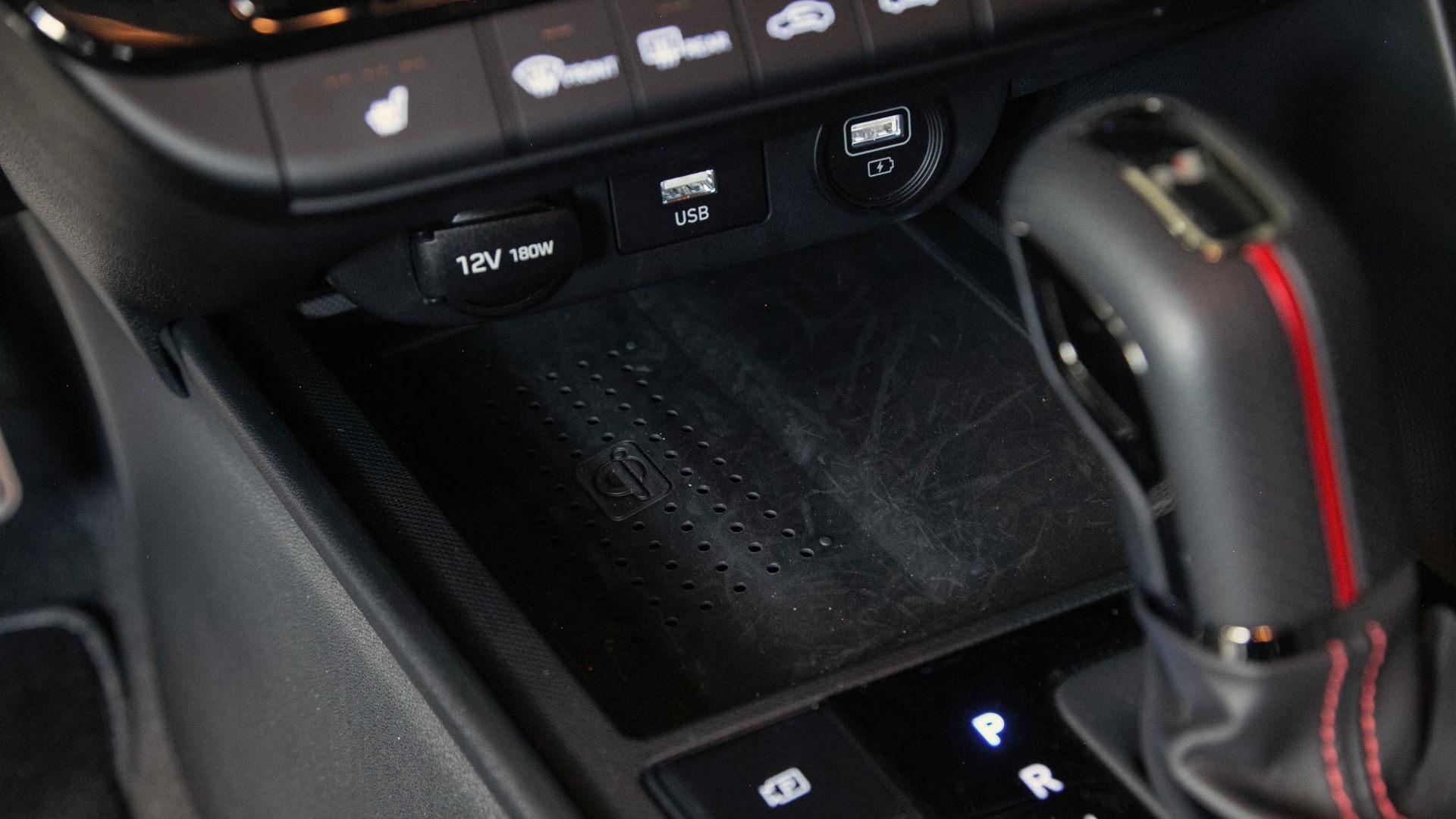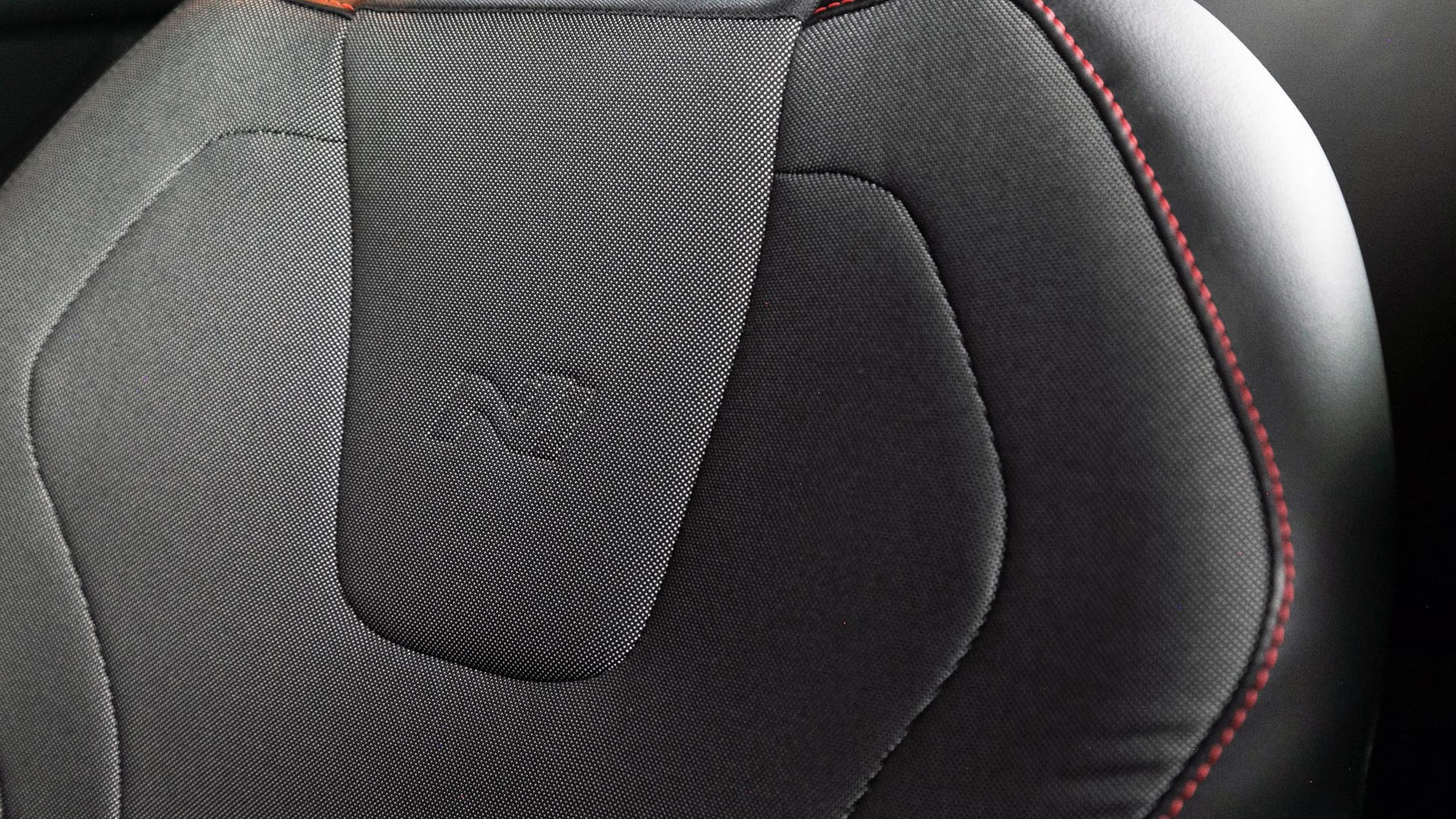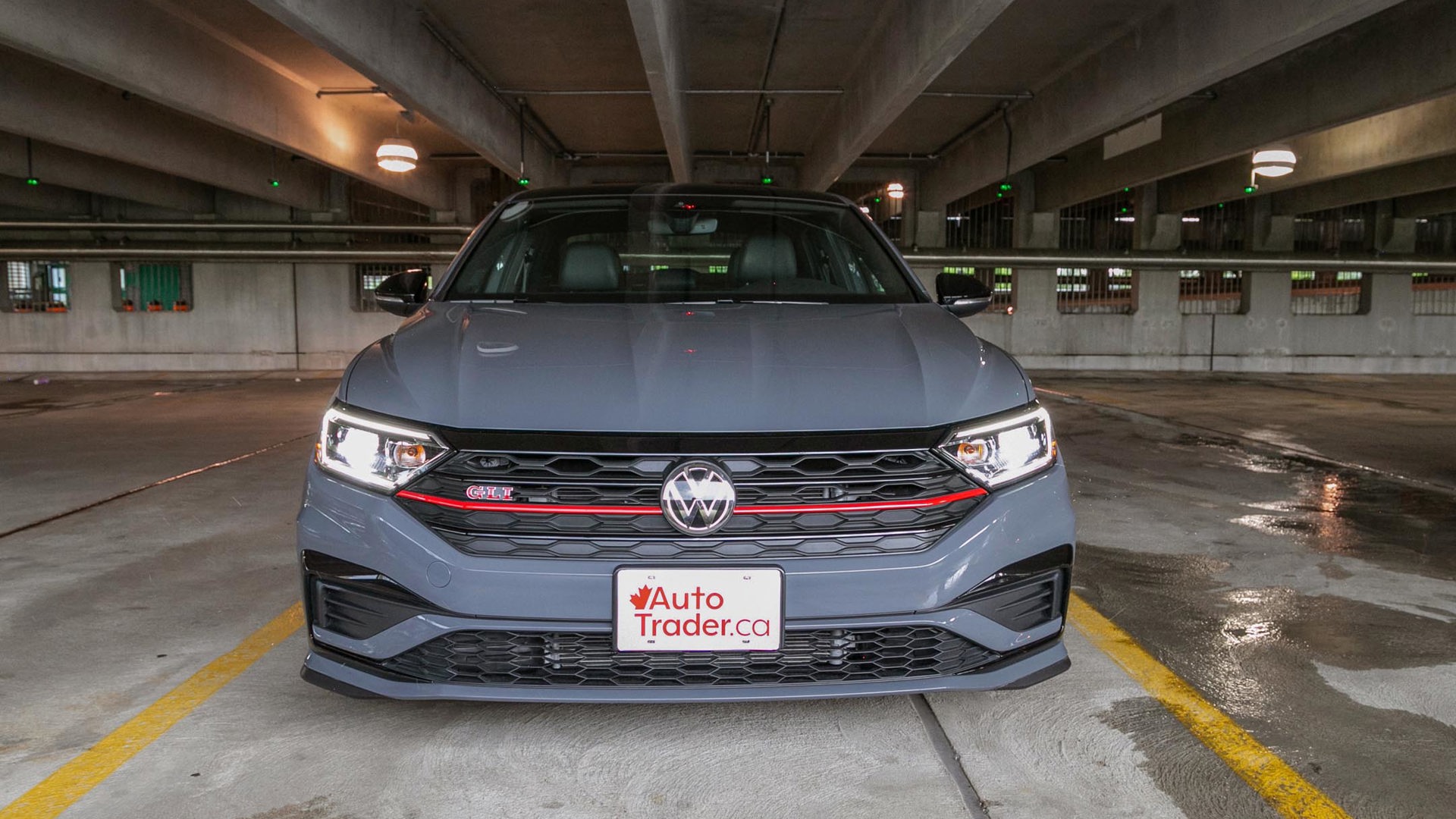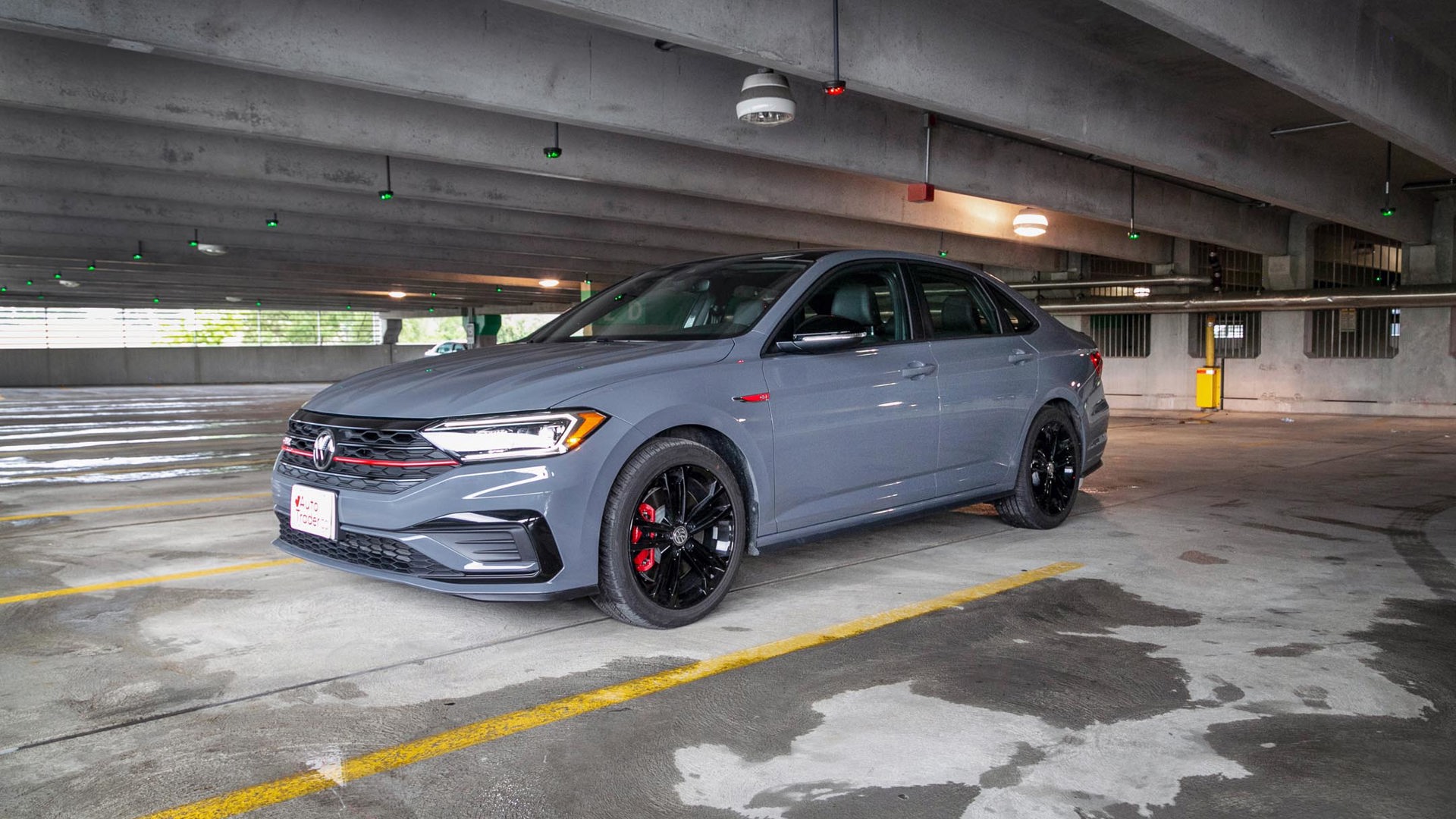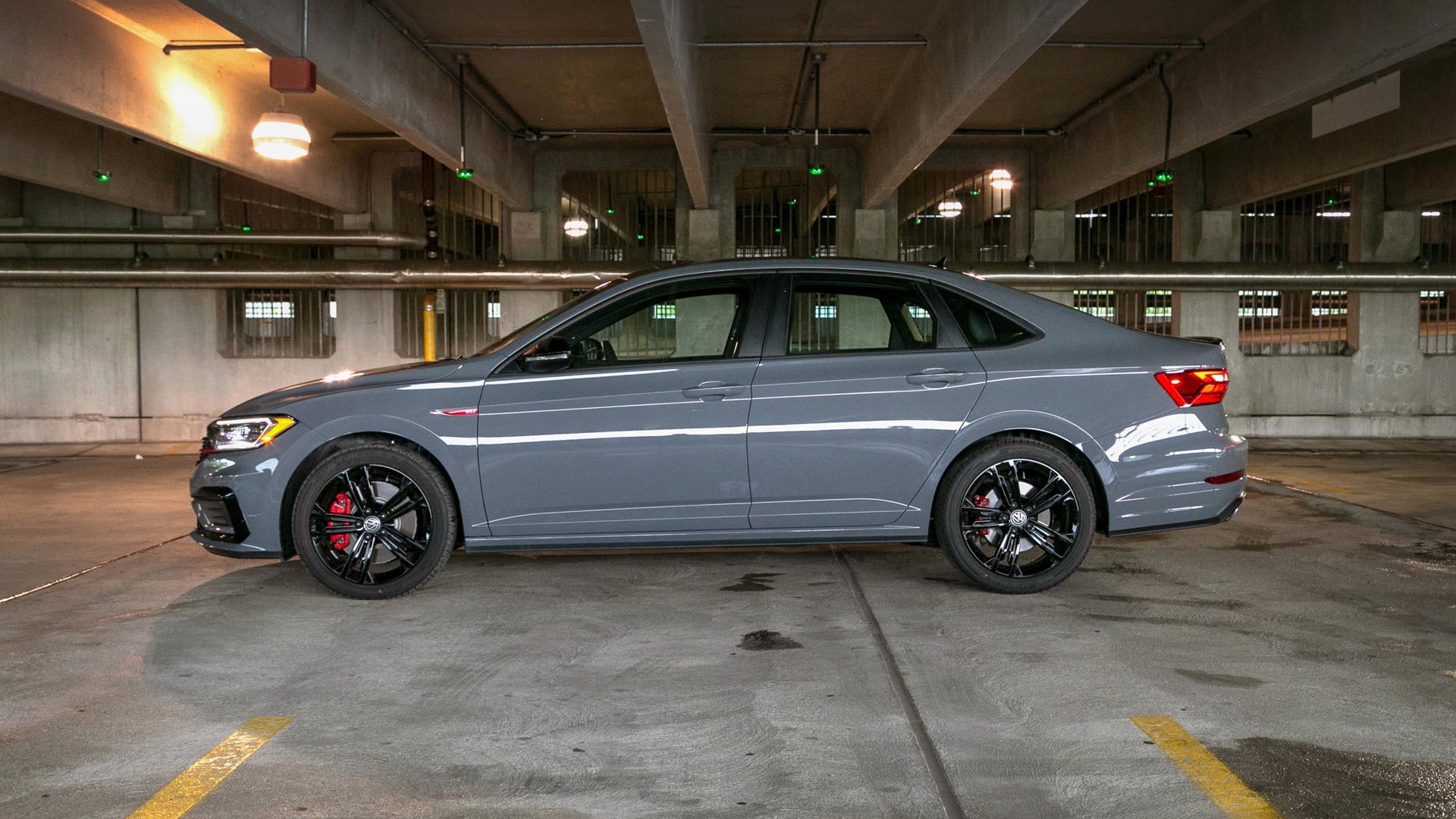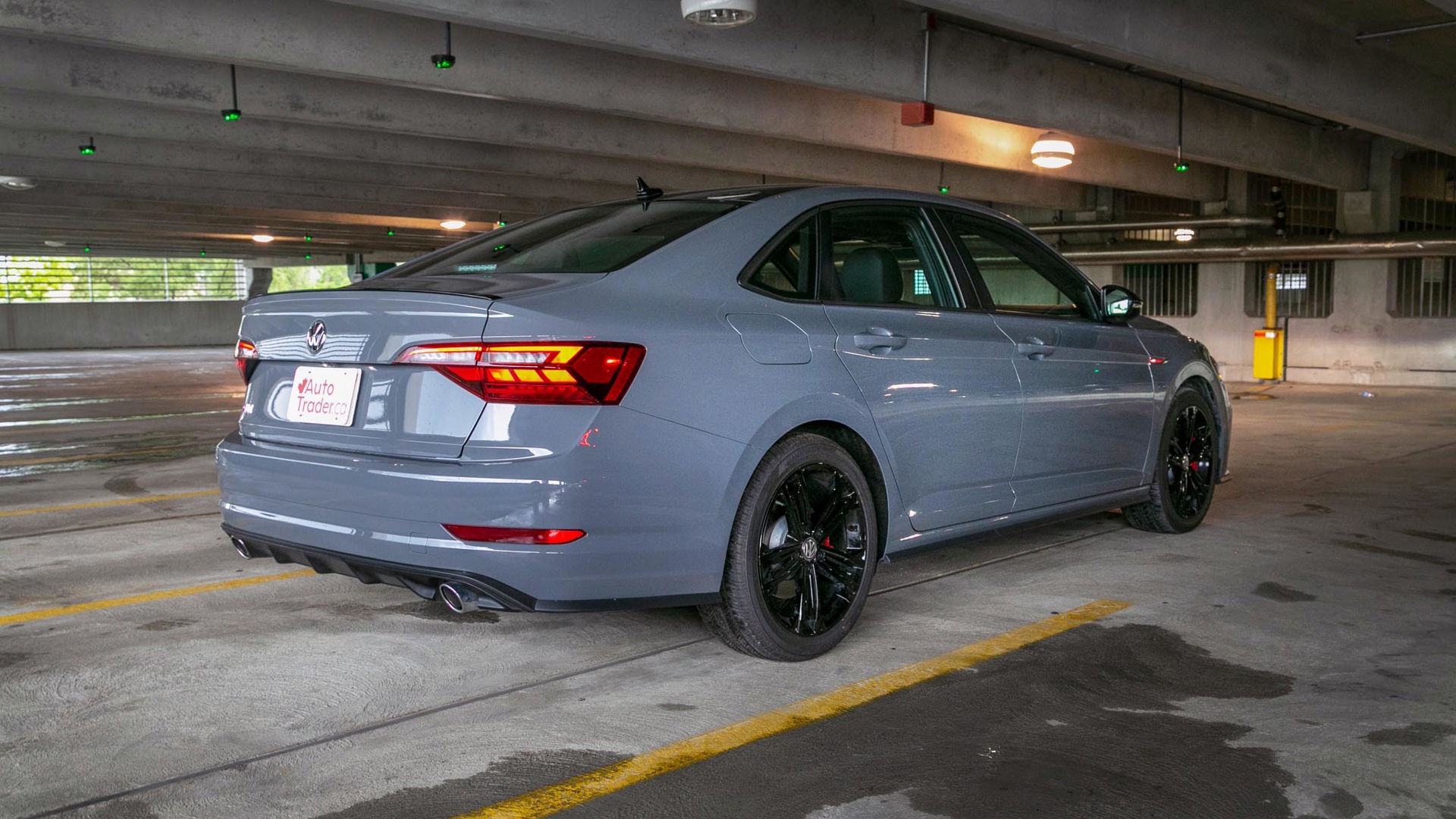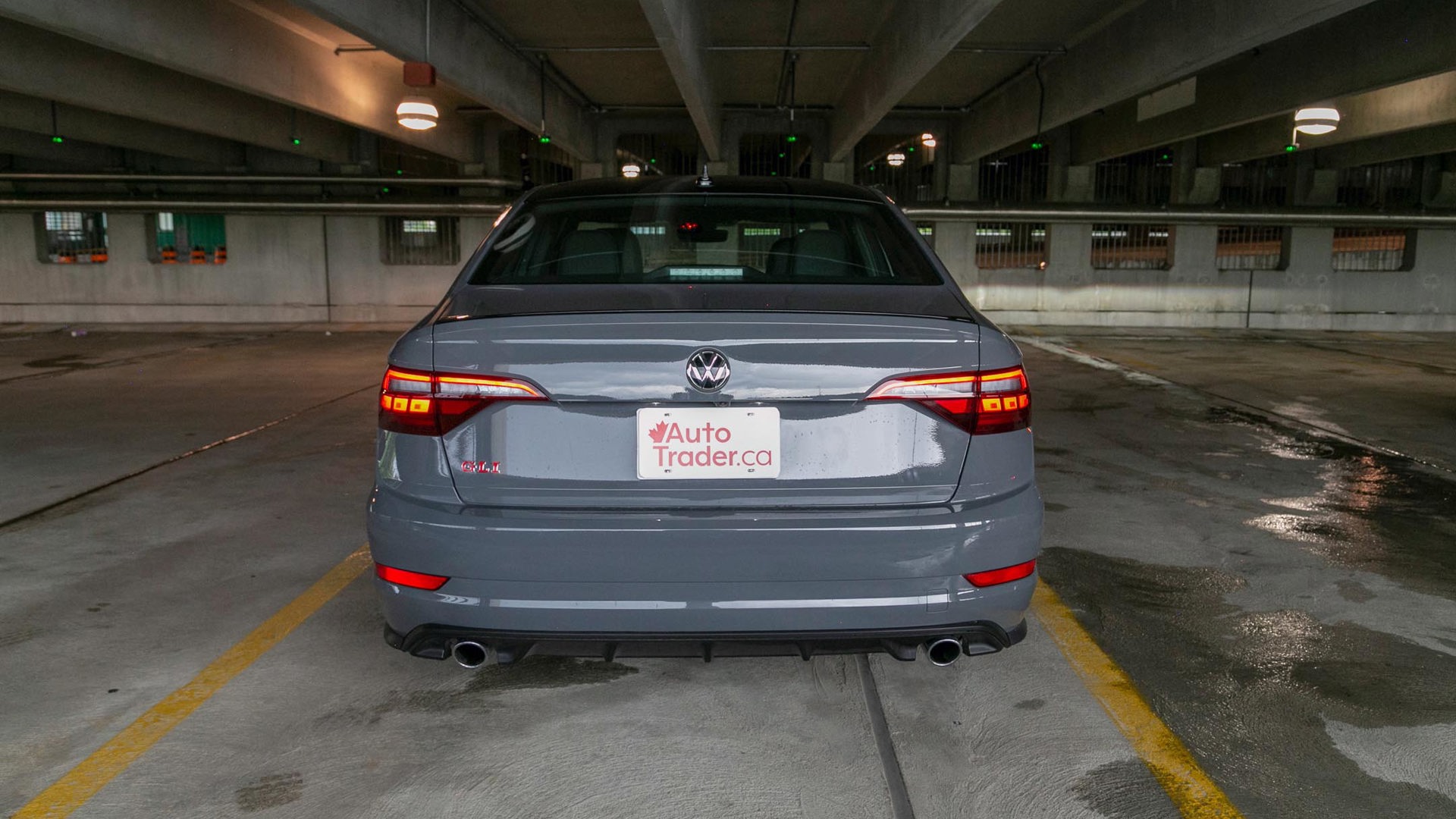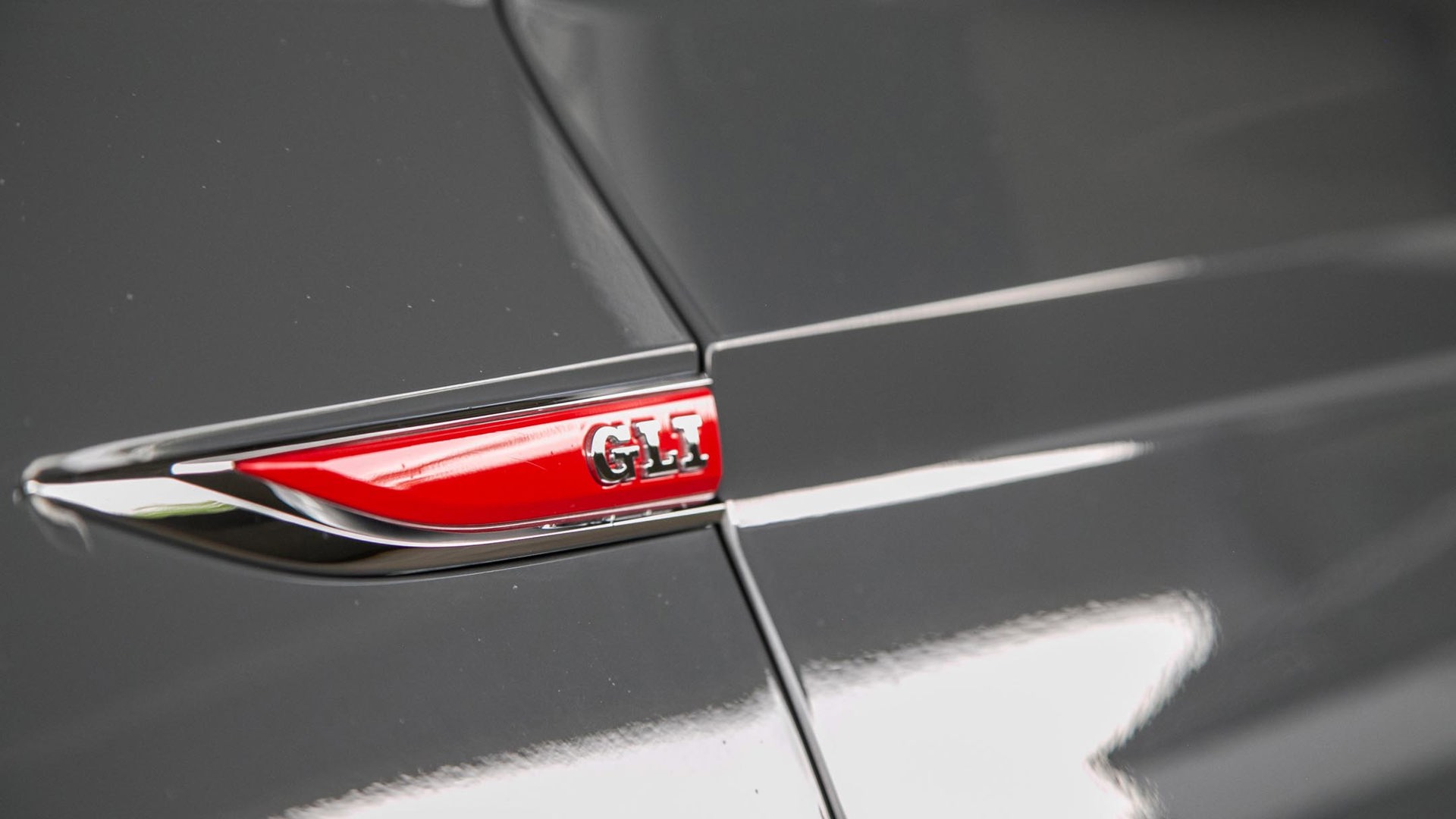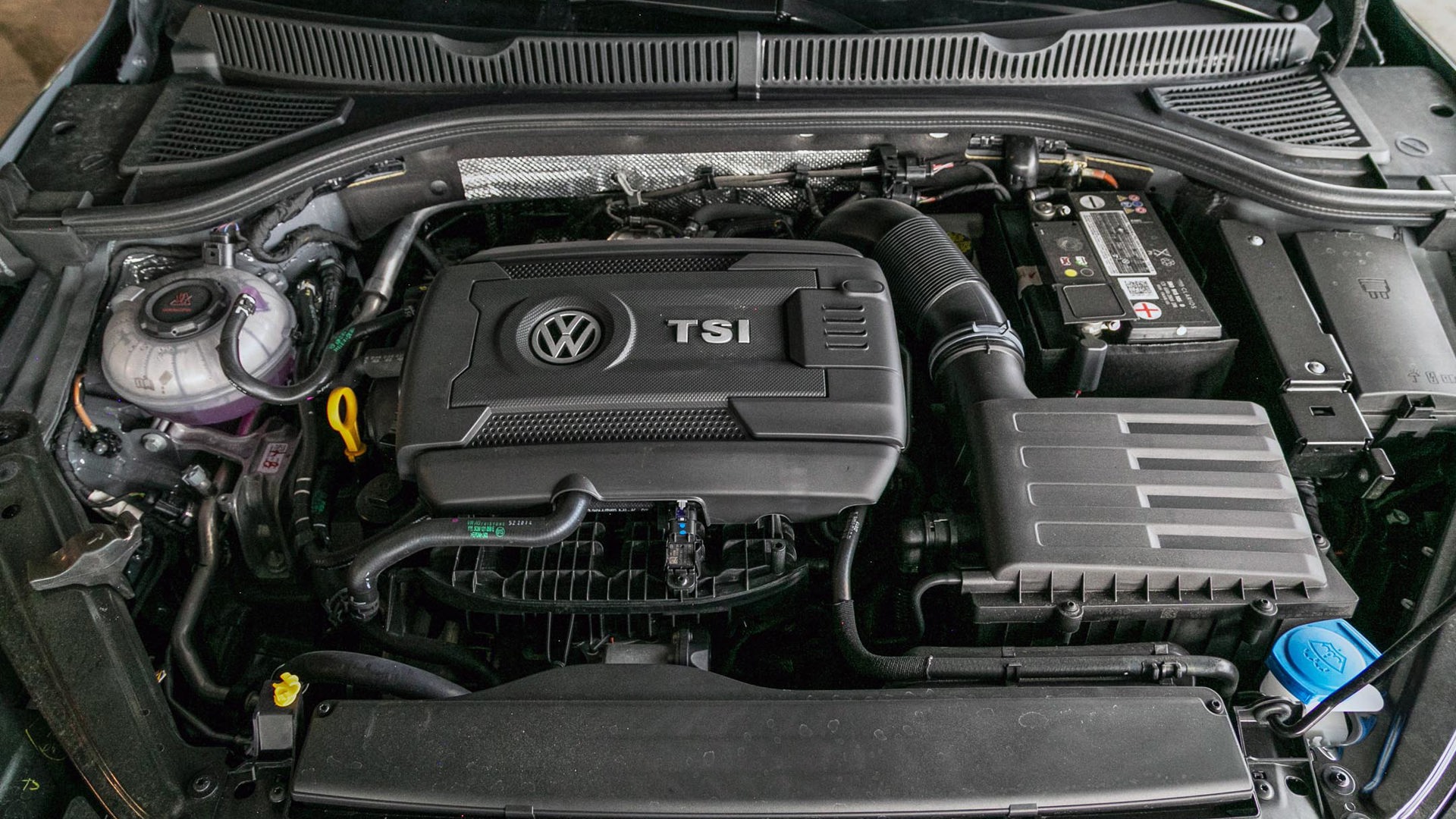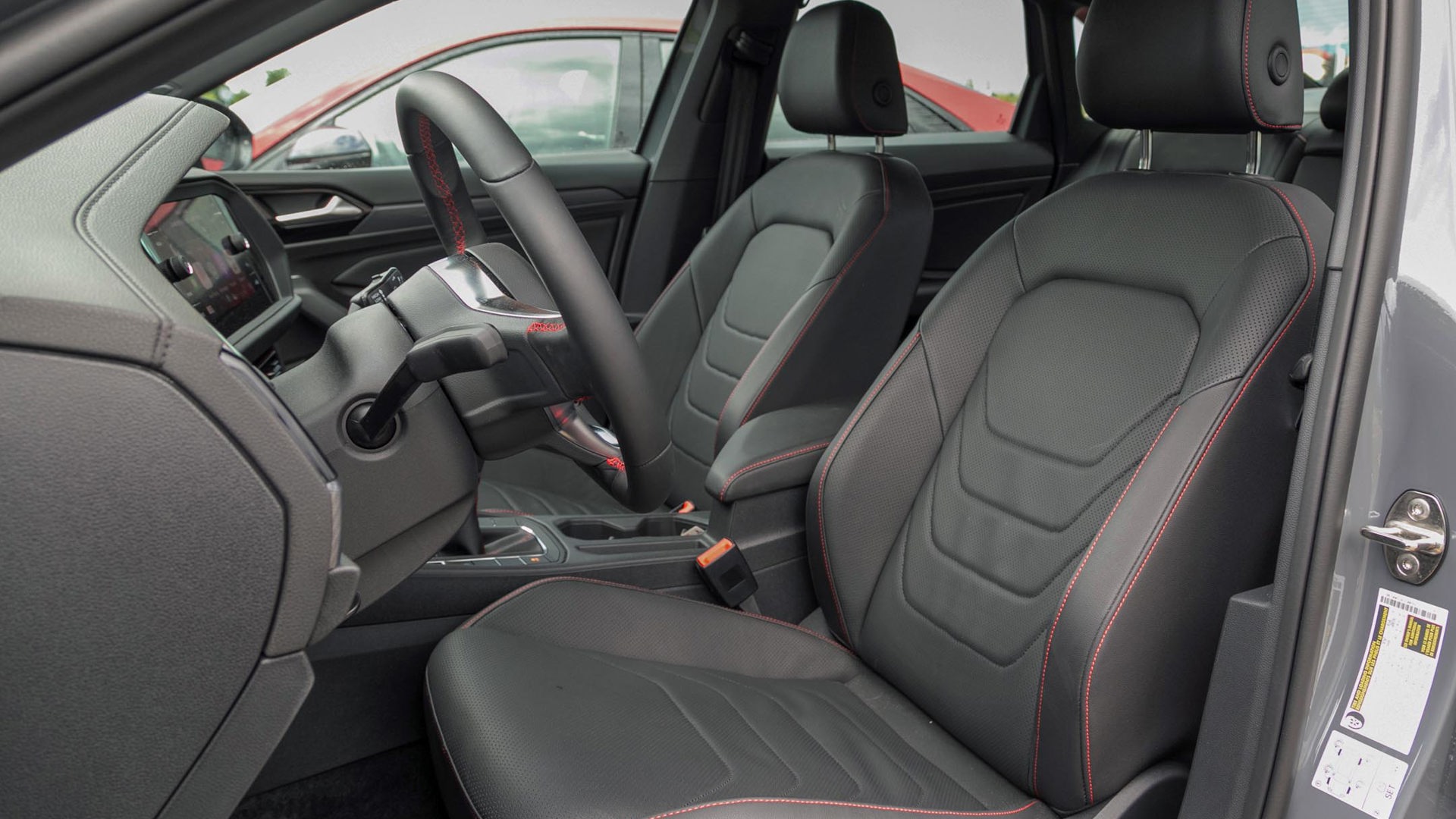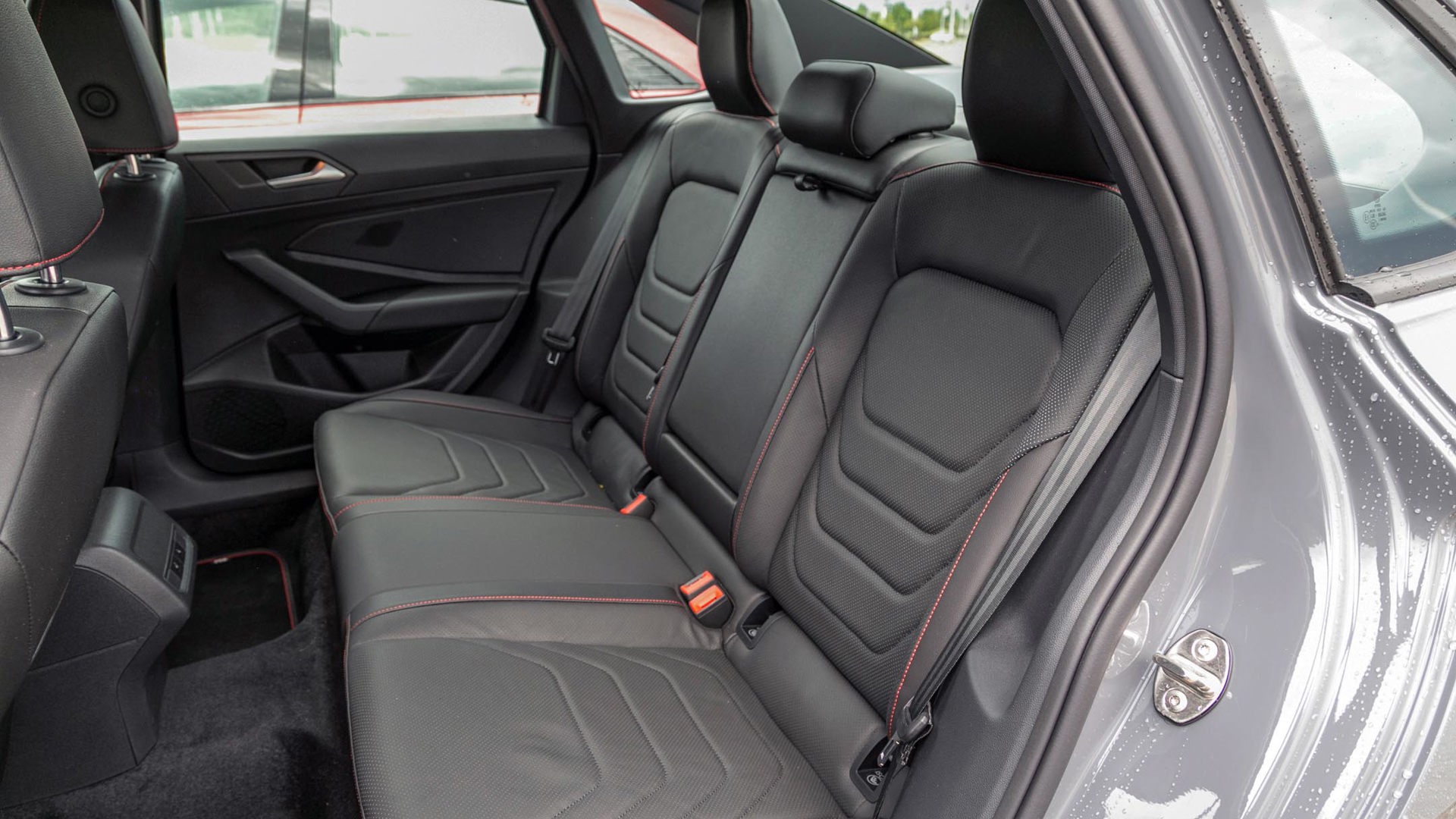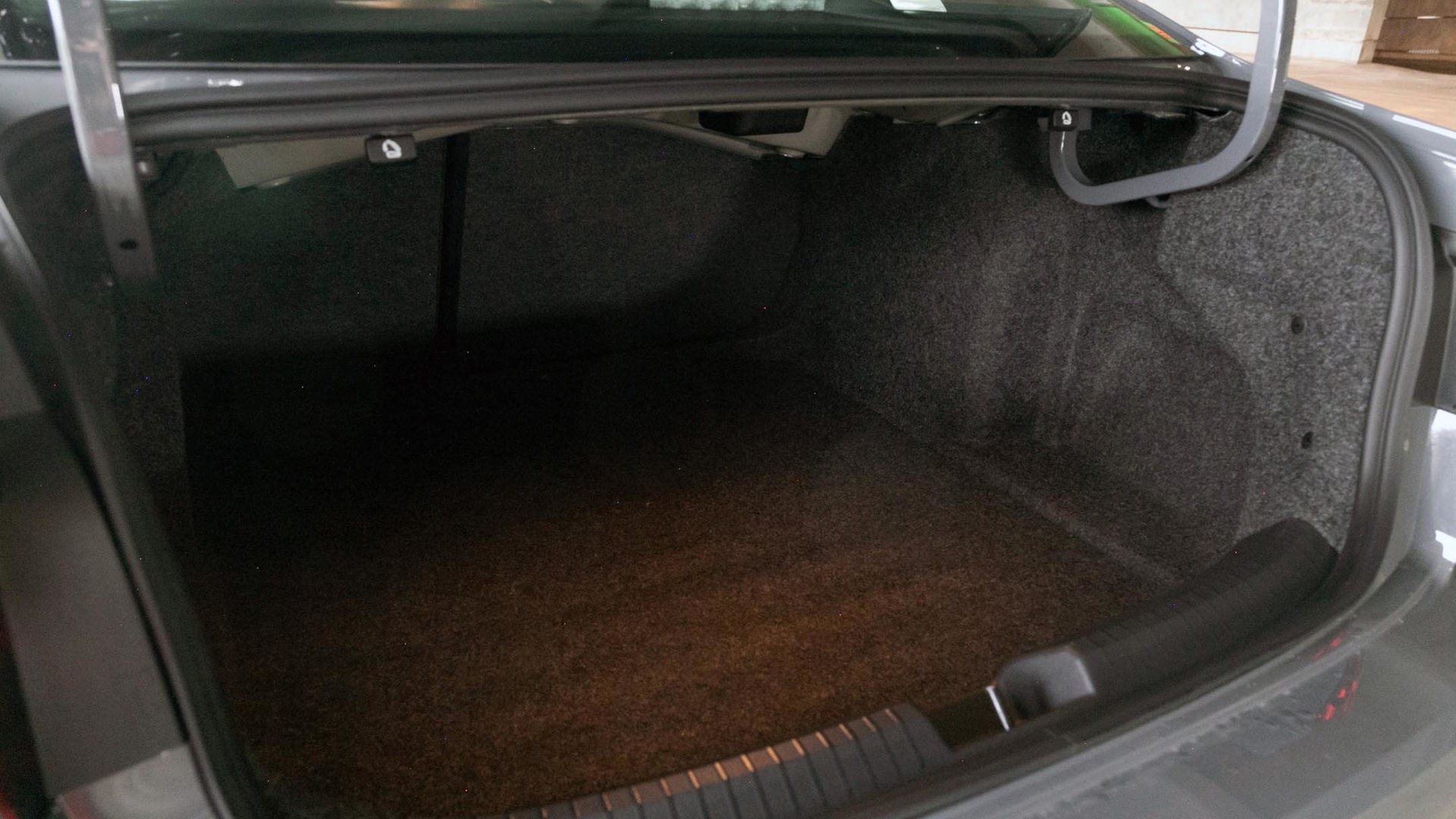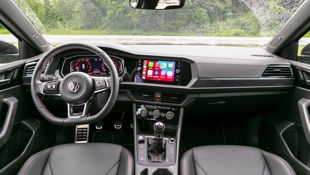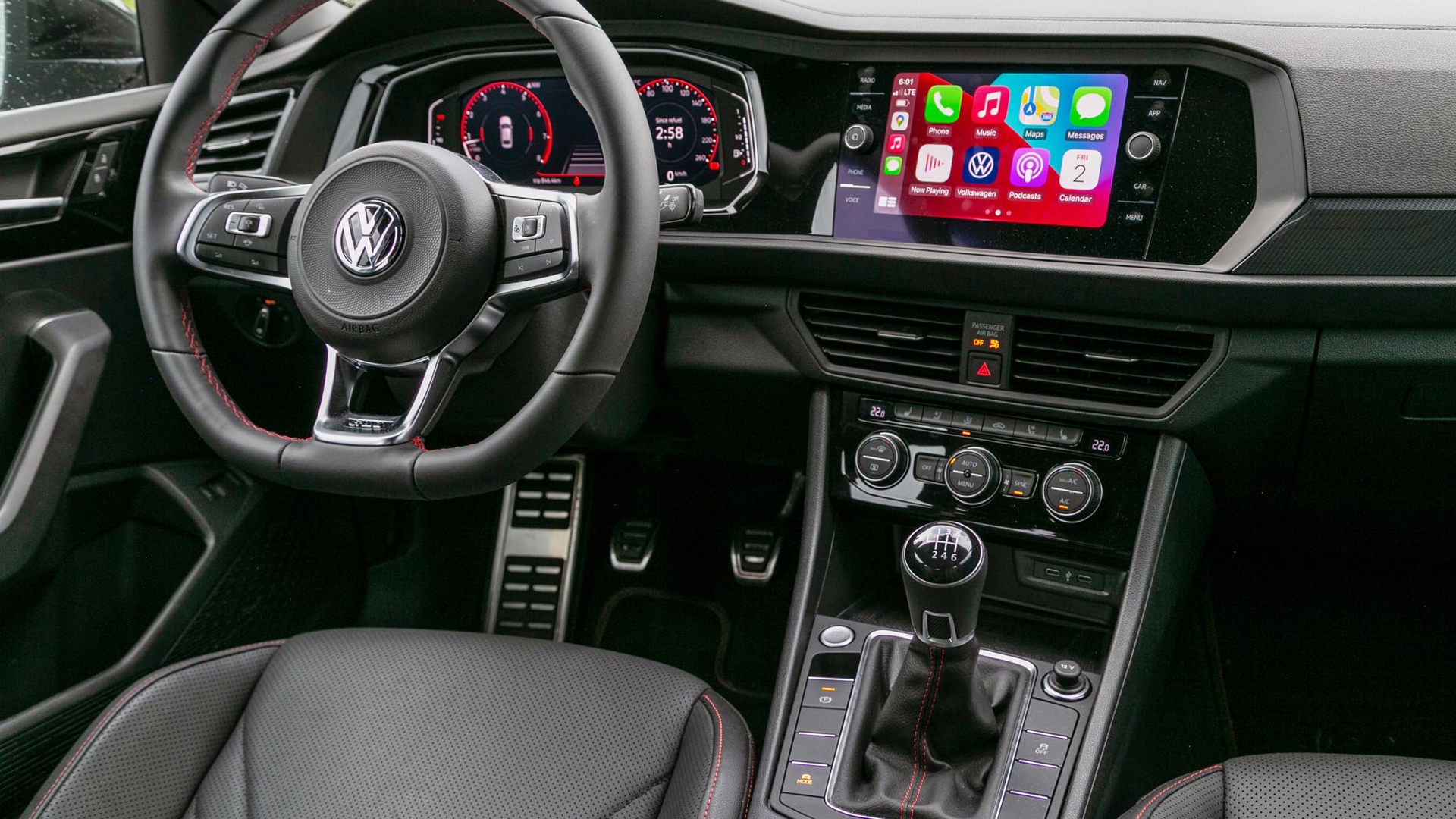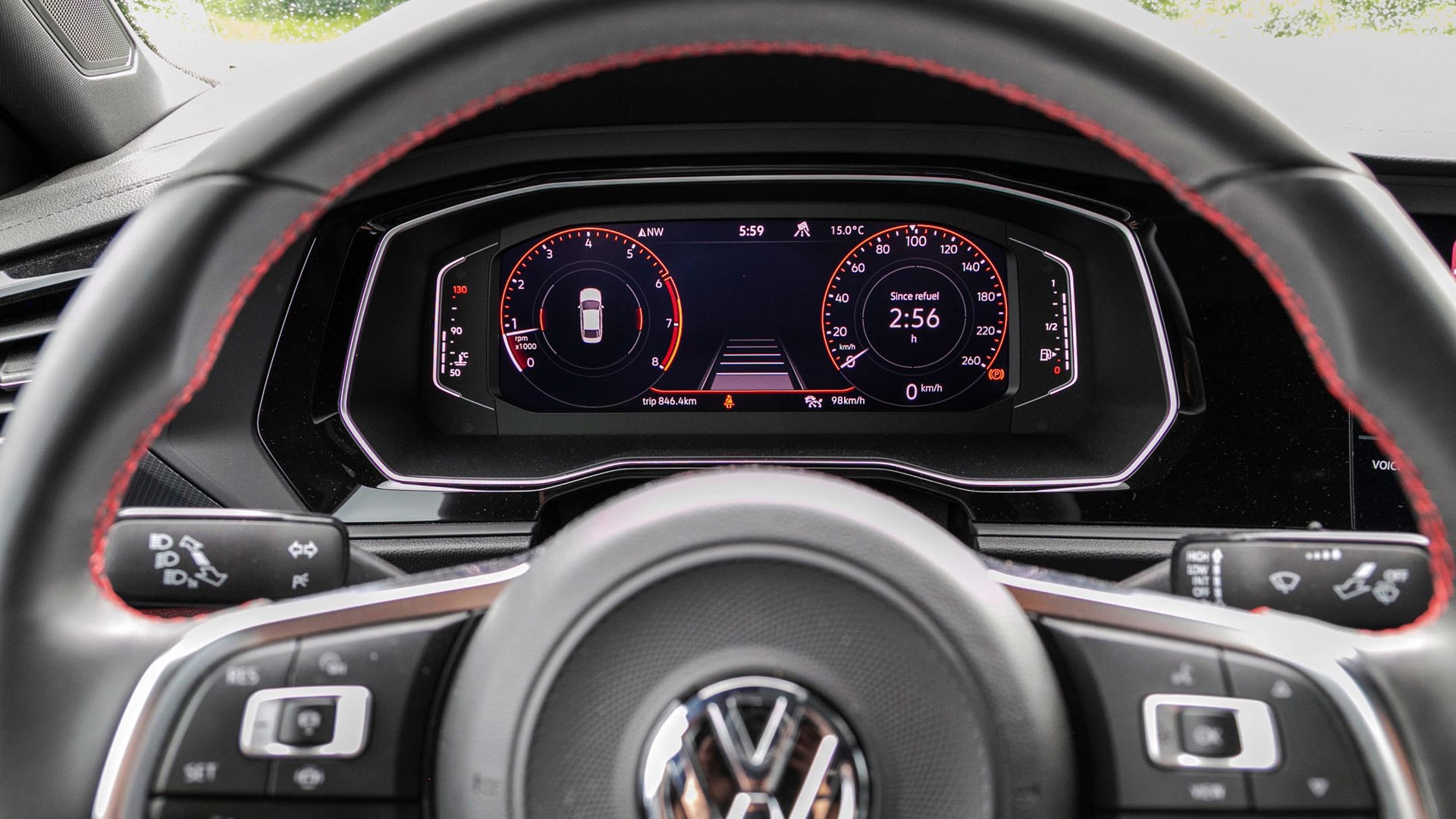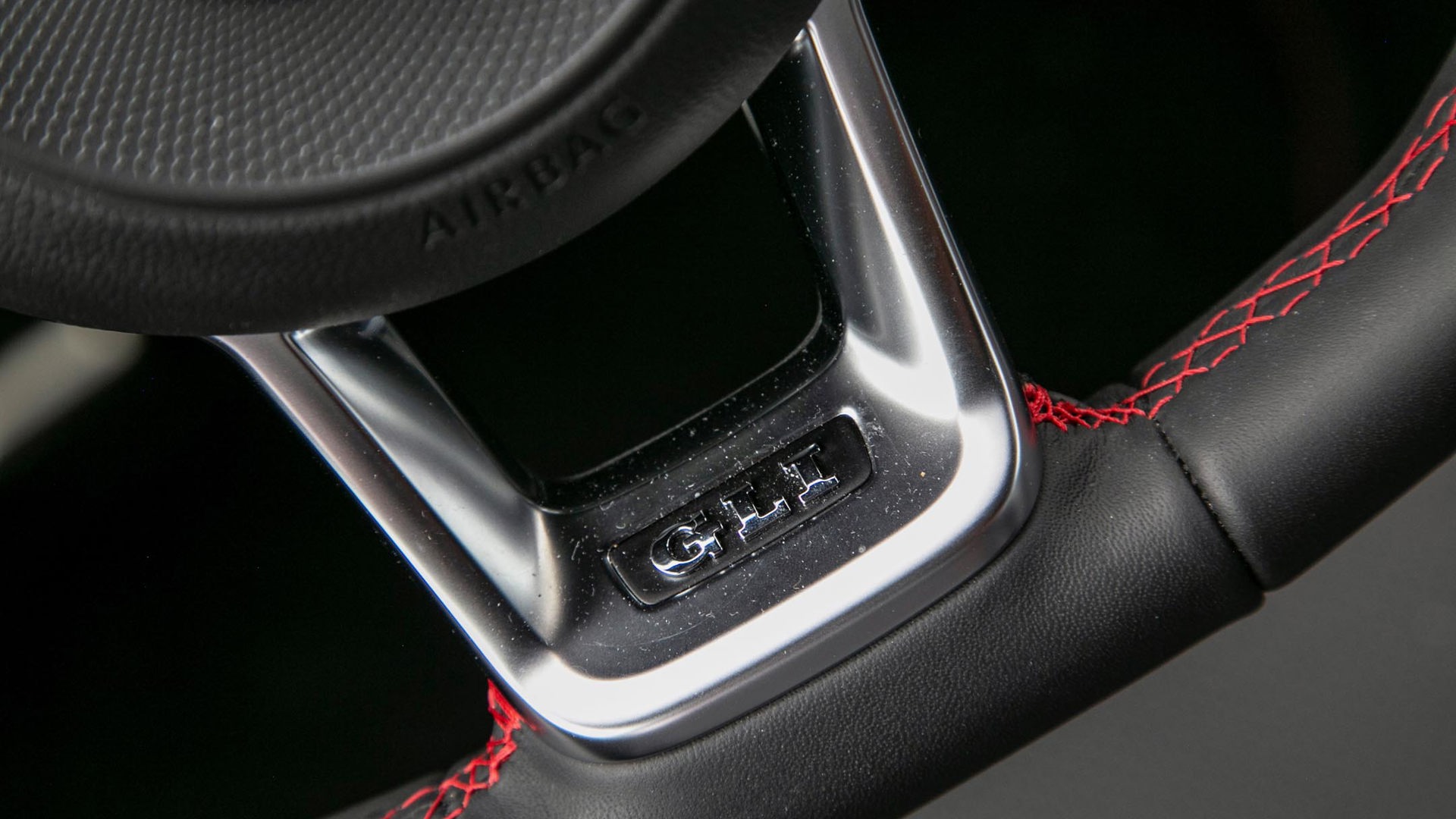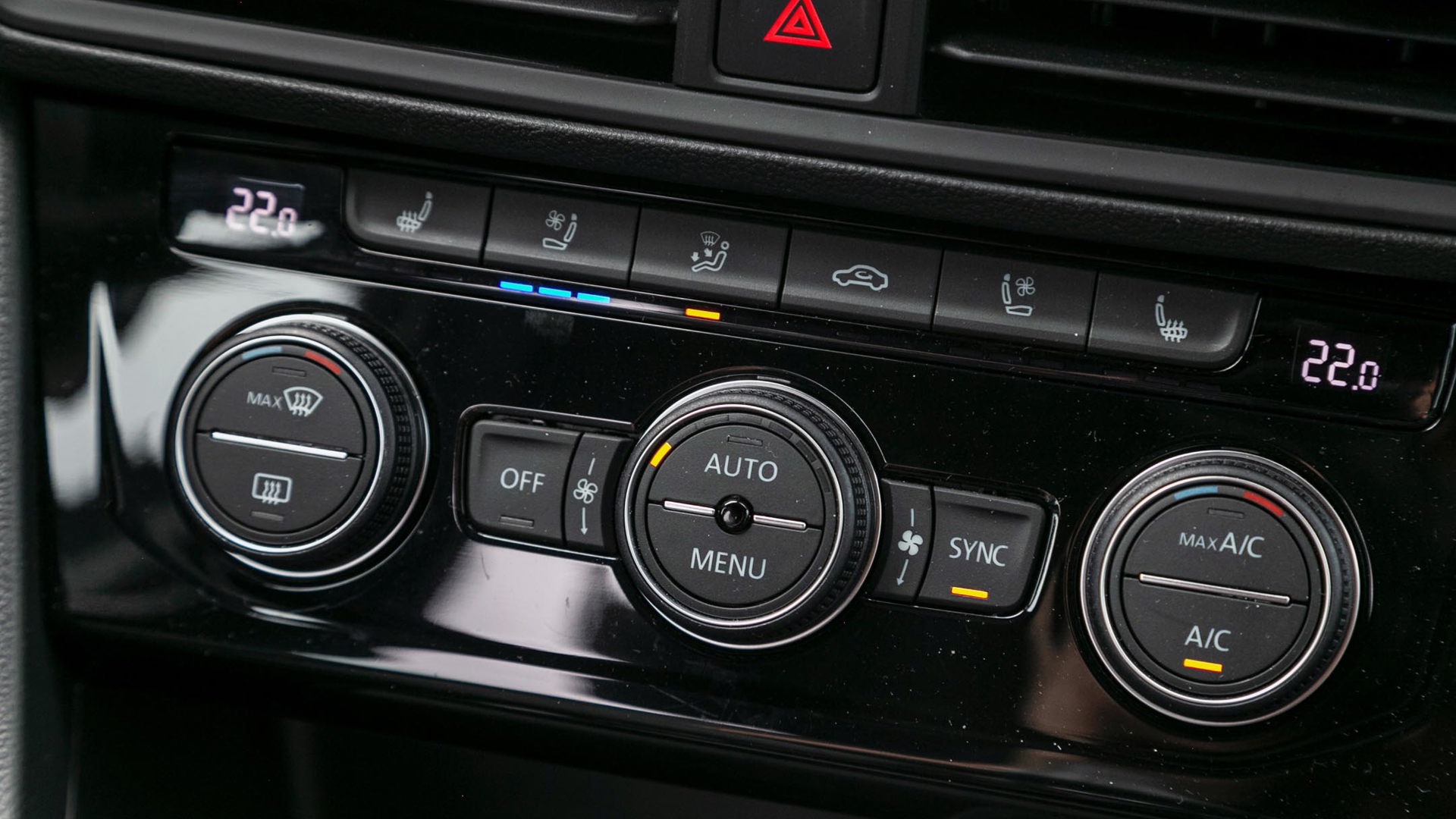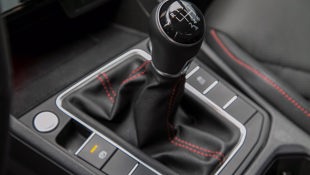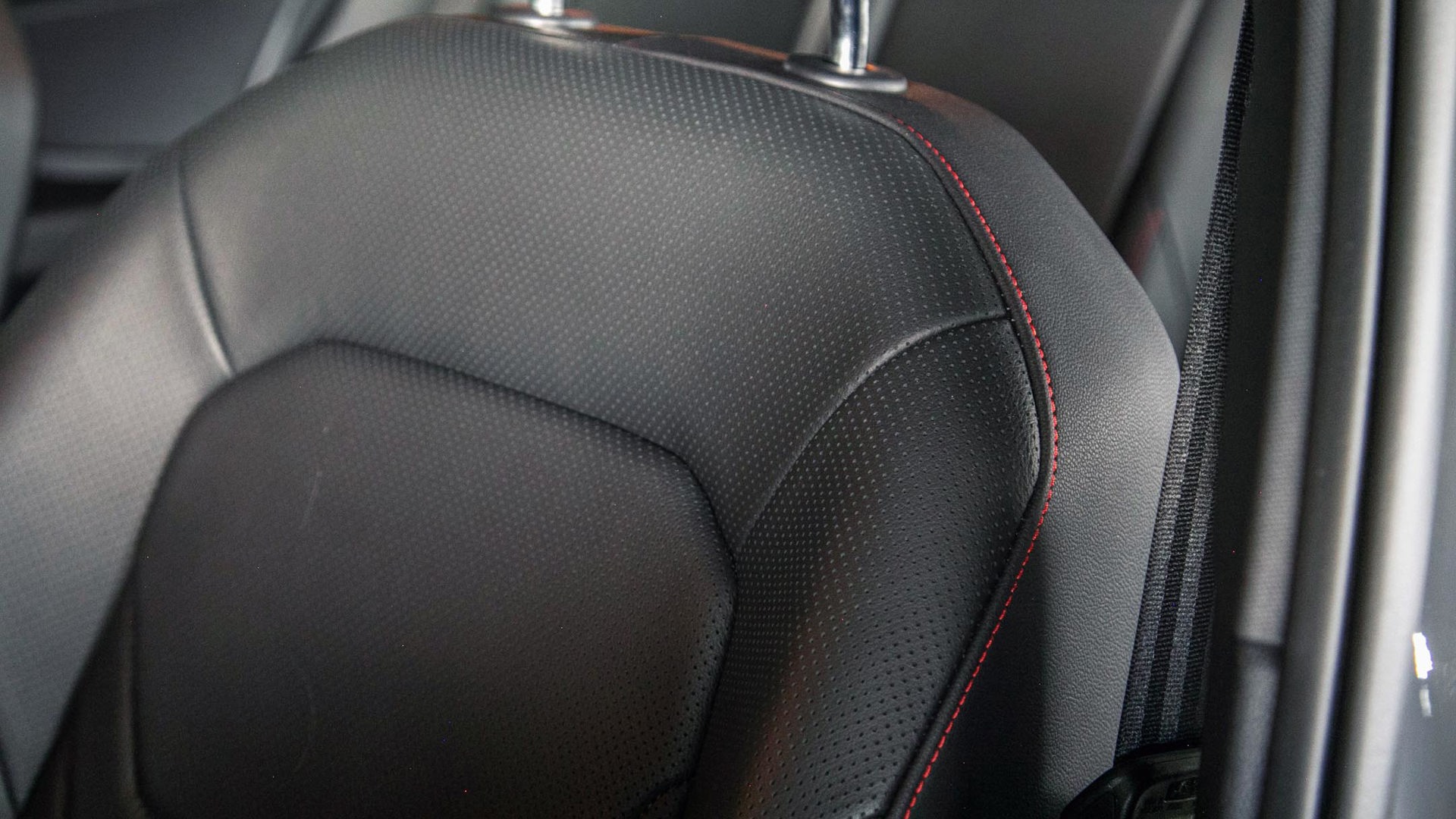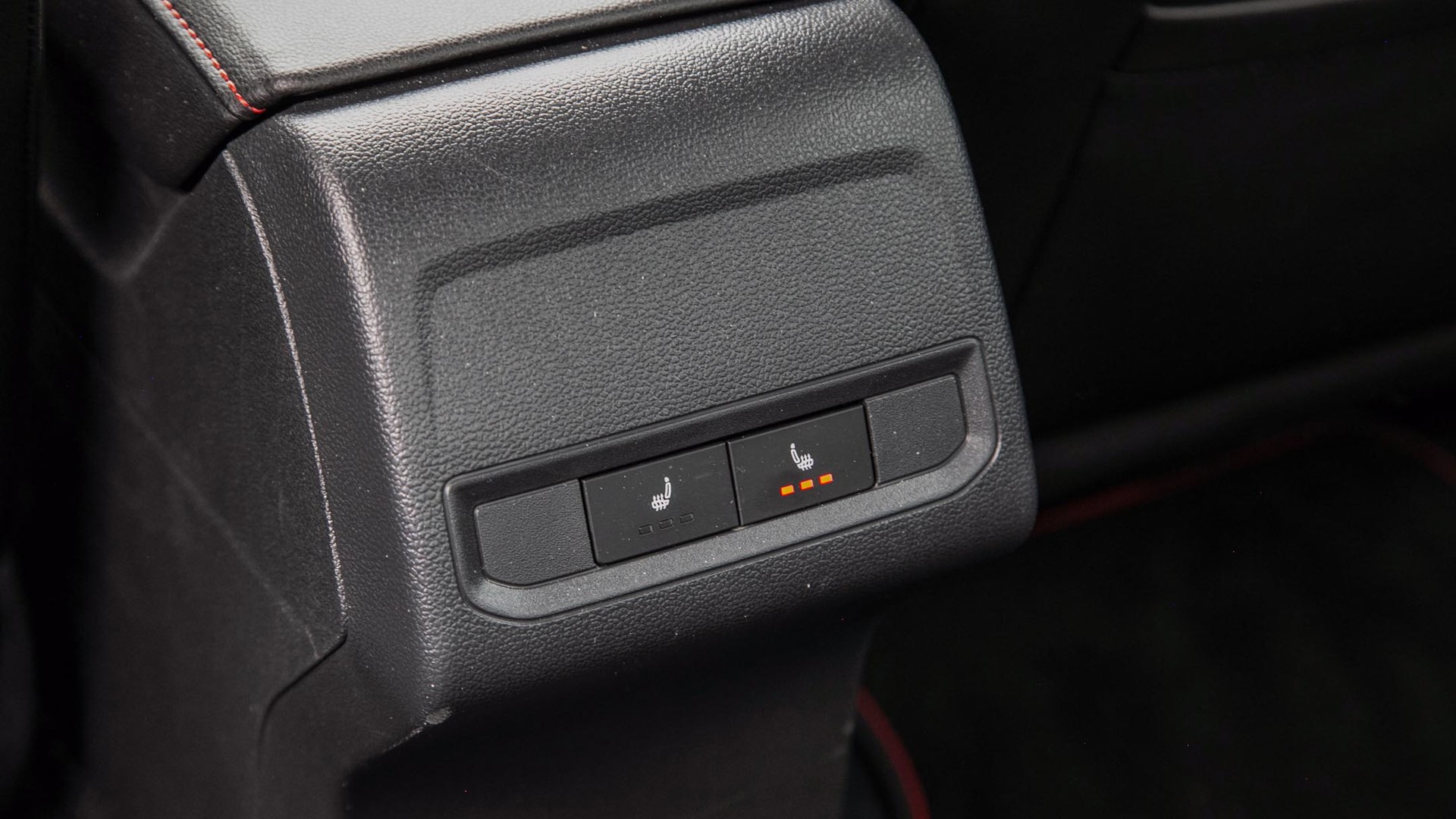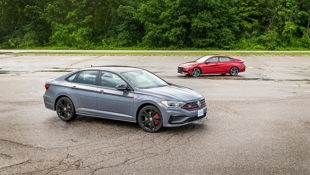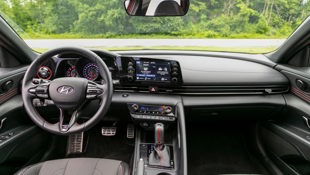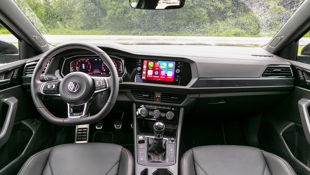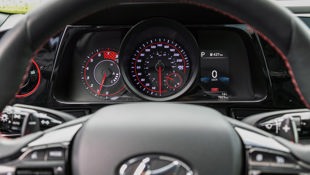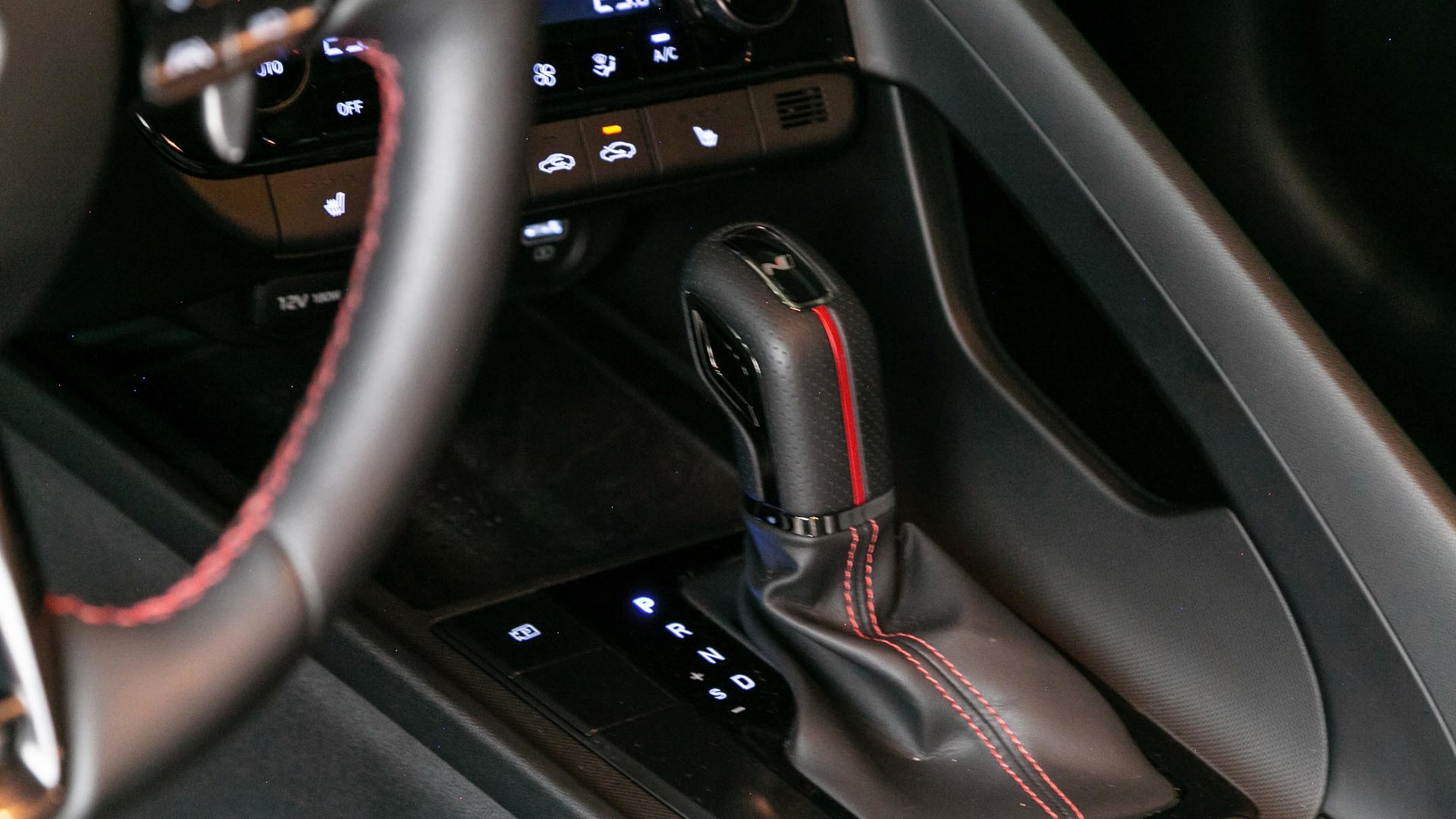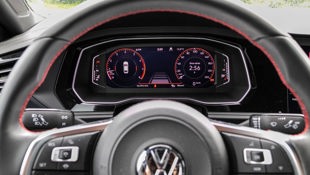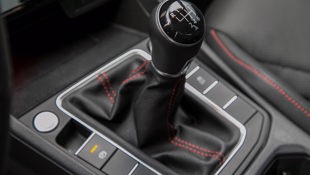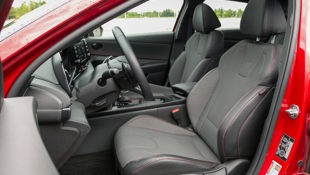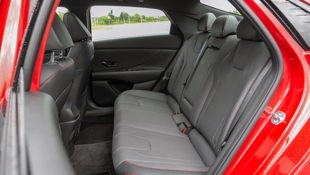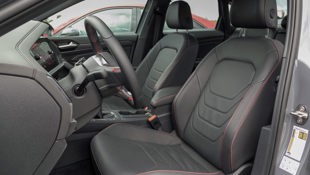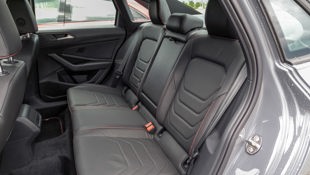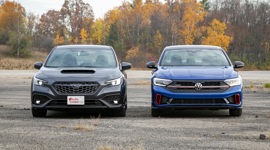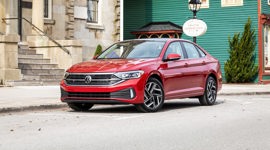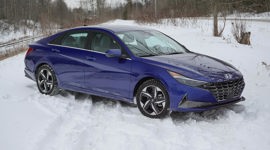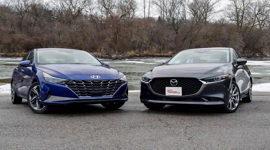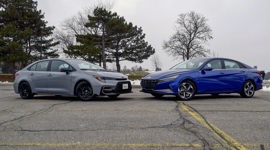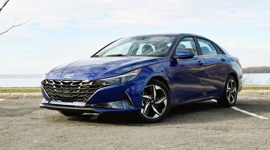Comparison Data
|
2021 Hyundai Elantra N Line
|
2021 Volkswagen Jetta GLI
|
|---|---|
|
Engine Displacement
2.0L
|
2.0L
|
|
Engine Cylinders
I4
|
I4
|
|
Peak Horsepower
201 hp
|
228 hp
|
|
Peak Torque
195 lb-ft
|
258 lb-ft
|
|
Fuel Economy
8.4 / 6.6 / 7.6 L/100 km cty/hwy/cmb
|
9.7 / 7.0 / 8.5 L/100 km cty/hwy/cmb
|
|
Cargo Space
402 L
|
399 L
|
|
Base Price
$27,799
|
$30,995
|
|
A/C Tax
$100
|
$100
|
|
Destination Fee
$1,725
|
$1,750
|
|
Price as Tested
$29,624
|
$32,845
|
|
Optional Equipment
None
|
None
|
Frankly, it’s a bit surprising these two cars exist.
While sedan sales are trending towards oblivion, this pair of compacts meant for drivers seeking some sporty, affordable fun seems an unlikely duo in this day and age.
But here we are, with the all-new 2021 Hyundai Elantra N Line (not to be mistaken with the forthcoming Elantra N) and the 2021 Volkswagen Jetta GLI – a pair of sporty-ish machines that remind us that cars can still be reasonably affordable, decently practical, and even a bit fun. After spending time in each on highways, around town, and through some country curves, we discovered just how differently these two companies have approached this genre, and that sometimes you truly do get what you pay for.
Styling
Maybe our stormy test day was getting to her, or maybe she simply wasn’t mincing words, but when asked about the styling of the GLI and the N Line, AutoTrader.ca Editor-in-Chief Jodi Lai described the pair as “the boring one and the ugly one.” Ouch! We both agreed that Volkswagen’s Pure Grey was a drab colour choice, but to me, the Jetta’s conservative design stays true to the model’s evolutionary styling of the last few GLI generations, and it should age well over the next decade.
On the other hand, Hyundai’s aggressively overstyled Elantra features a litany of slashes and pointy shapes on every panel that make it appear like it’s trying too hard to wear the latest trends that are destined to be hopelessly out of fashion next season. If you think that gaping maw of a grille looks extreme in the photos, just imagine it with a big buck-toothed licence plate stuck in the middle.
Inside, the interiors are a veritable coal bin of black and grey finishes, livened up only slightly by some red stitching in a few places. The Elantra’s moulded-in passenger grab handle is a nice visual touch, but it’s made of hard plastic with a notable seam that reminds occupants that this is a car built to a tight budget. The GLI’s layout is as conservative as its exterior, but the Elantra’s exchanges the exterior’s sharp edges for swooping lines.
Elantra N Line: 6.5/10; Jetta GLI: 7.5/10
Features
While both of these cars have a sporting bent, they also represent upper-spec trims, with the GLI being the most luxurious Jetta you can buy. Black deck-lid spoilers, a pair of chrome-tipped exhaust pipes, and 18-inch wheels are found on both cars – and in keeping with their sporty themes – while inside, premium sound systems with satellite radio, dual-zone climate controls, and sunroofs are common elements.
The GLI utilizes more soft-touch materials throughout, but it’s the seats that really make it feel a more premium machine. Not only are they leather-covered (versus the Elantra’s cloth seats), but they’re power-operated, and while Hyundai offers heated fronts, Volkswagen fits the GLI with standard heated front and rear seats, plus ventilation up front. The Elantra also throws in a heated steering wheel, a feature absent from the Volkswagen, which counters with rain-sensing wipers and onboard navigation not found in the Hyundai.
Elantra N Line: 7.5/10; Jetta GLI: 8.5/10
User Friendliness
Both cars have impressive arrays of technology ranging from wireless charging pads to wireless connectivity for smart phones. Apple CarPlay and Android Auto are standard equipment across the board.
The eight-inch touchscreens in both cars offer sharp, bright displays that don’t require redundant rotary knobs or tedious touchpads between the seats to function. Steering wheel controls are straightforward in both cars, too, though the GLI’s configurable all-digital gauge display looks fancier and can call up more info than the N Line’s more traditional setup. Strangely, Hyundai offers its excellent 10-inch display and digital gauge display as part of an optional package in the more affordable Elantra Ultimate but not here.
Hyundai’s Bluelink app permits remote access to the car from a connected smartphone, allowing all sorts of functions like pre-starting and climate conditioning, to a “find my car” function. The GLI’s VolkswagenPlus app offers little more than some discount offers, generic maintenance tips, and the ability to monitor one’s lease or finance account details.
Still, all this technology is only worthwhile if it actually functions, and our Elantra’s infotainment system proved highly disagreeable, refusing to stay connected to my iPhone regardless of the use of wireless or hard-wired connection. Thinking it might’ve been a problem with my phone, we tried Jodi’s Android phone, which also struggled to connect, although it eventually resulted in limited success. The Volkswagen’s system worked flawlessly for both phones wirelessly, meanwhile.
Elantra N Line: 6/10; Jetta GLI: 8/10
Power
These two cars were paired up here because of their matching 2.0L turbocharged engines, front-wheel-drive formats, and similar sizes. Within Volkswagen’s world, the Golf GTI and Jetta GLI share similar drivetrains and mid-level performance missions behind the wilder Golf R. Similarly, Hyundai’s N Line cars are a stopgap in the performance spectrum between the more pedestrian trims and the full-spice N cars like the Veloster N.
The GLI boasts a nominal 27 hp advantage over the N Line’s 201 hp that should be pretty well offset by the 125 kg (276 lb) more heft it needs to haul around. But on the road the Volkswagen is noticeably quicker thanks to the 258 lb-ft of torque that tops the N Line’s output by a significant 63 lb-ft. Whether launching from a standstill, pulling out of a corner, or passing at highway speed, the Volkswagen feels far livelier than the Elantra.
These cars were also chosen for their similar seven-speed dual-clutch automatic transmissions paired to their four-bangers. Past experience with VW’s dual-clutch transmission has revealed its impressively quick and intuitive shifts, but surprisingly, our test car came equipped with a six-speed manual. Both clutch and shift feel were light and easy to live with, even in bumper-to-bumper traffic, and Volkswagen deserves a pat on the back for still offering this gearbox to the few who are likely to spec their cars with it.
The Elantra N Line is only offered with two pedals, and Jodi and I agreed the transmission was disappointing, often getting in the car’s way of performing rather than enhancing it. Shift quality was occasionally choppy, but more concerning was the way it often seemed to struggle to find the proper gear, especially during moderate acceleration at lower speeds, resulting in the engine’s revs falling out of their optimal power range, and making the car feel sluggish.
Elantra N Line: 6/10; Jetta GLI: 8/10
Driving Feel
Driving the cars on both dry and very wet roads, their sporty all-season tires offered decent grip, and even with its considerably greater twist on tap, the GLI never suffered from torque steer. In fact, whether plodding along in traffic, or driven spiritedly on back roads, the Volkswagen felt like a much more sophisticated machine, offering a more planted feel, but also better isolation from road and wind noise than the Hyundai. The GLI’s adaptive suspension plays a big part in this, allowing a firmer or softer setting, depending on the driver’s mood.
The N Line, meanwhile, feels like what it is: an affordable car whose performance dial has been turned up a few degrees. It’s a competent handler with decent steering feel, but it’s just never as solid as the GLI. Braking in both cars is drama-free with strong binders offering decent bite and linear feel.
Elantra N Line: 7/10; Jetta GLI: 8/10
Fuel Economy
As economical sedans that offer a modicum of sportiness, it’s in economic matters where the Hyundai begins to even up the score. The government ratings show the N Line bests the GLI in the city (8.4 L/100 km versus 9.7), highway (6.6 versus 7.0), and combined (7.6 versus 8.5). Those Volkswagen figures are for our stick-shift tester, but even when equipped with the automatic the Jetta lags behind the Elantra in efficiency. Our results backed up the government figures, with the N Line showing an overall average in the low 6s versus low 7s for the GLI.
Elantra N Line: 8/10; Jetta GLI: 7/10
Practicality
Similarly, Hyundai has carved out an impressive amount of space inside the Elantra for both people and stuff. Despite its shorter overall length, the Elantra’s longer wheelbase helps provide more head- and legroom front and rear compared to the Jetta, albeit not by much.
The Jetta’s trunk offers an impressive 399 L of space, and the trunk lid is sprung so it pops up and out of the way when the release button is pressed. Even though the lid doesn’t launch itself up, the Elantra’s trunk boasts an extra three litres of capacity, although its shape isn’t as square, and its liftover height is greater, making it less useful despite its size.
Elantra N Line: 7.5/10: Jetta GLI: 7/10
Comfort
Despite their compact classifications, these are two very sizeable cars with ample interior space suitable to transport two front and three rear occupants with decent comfort. A number of the GLI’s additional features contribute its superior comfort over the N Line, as does its slightly better noise and vibration isolation. The Jetta’s ride is better managed, too, although both the VW and Hyundai provide sporty-but-compliant rides.
Elantra N Line: 7/10; Jetta GLI: 7.5/10
Safety
Hyundai and Volkswagen have filled their respective cabins with a host of airbags tucked within a solid structure. The Elantra and Jetta each achieved five-star ratings from the United States National Highway Traffic Safety Administration (NHTSA), and the Elantra received a Top Safety Pick rating from the Insurance Institute for Highway Safety (IIHS). Even though the Volkswagen showed top marks for all the criteria except the optional headlights, it hasn’t earned the same accolade.
Both cars have bright LED headlights, forward collision avoidance, lane-keeping assist, and blind-spot warnings, but only the GLI, regardless of stick-shift or automatic, comes with adaptive cruise control.
Elantra N Line: 8/10; Jetta GLI: 8/10
Value
The Elantra N Line offers a good amount of equipment and fun for less than $30,000. In fact, at $29,524, it undercuts the Jetta GLI by more than $3,200 when their non-negotiable freight fees are factored in.
That gap widens to nearly $5,000 when the Volkswagen is optioned with its automatic transmission. Even without, that’s likely to translate into higher monthly payments of at least $100. Still, factoring feature count, performance, and overall feel, the Volkswagen is worth the additional cost for those who can afford it, making it the better overall value.
Elantra N Line: 7/10; Jetta GLI: 7.5/10
The Verdict
In the end, the costlier, more powerful car comes out as the preferred choice in a pair of sporty sedans; a verdict which will likely surprise few. More shocking is how dominant the 2021 Volkswagen Jetta GLI appears in so many respects relative to the 2021 Hyundai Elantra N Line.
Still, as good as it is, Jodi simply found the Jetta didn’t excite her the way past drives in the GLI’s GTI cousin have. What’s more, we both agreed that based on the excellence of everything Hyundai has done in recent years, we simply expected more from the Elantra N Line.
If the sedan format has any hope of hanging on, it’s going to be with remarkable offerings. These two are quite good cars, but we’re looking forward to Hyundai’s full-sizzle Elantra N and the GLI receiving the GTI’s updated drivetrain in the coming months, too. Then there’s the next-gen Subaru WRX that’s due out imminently, and Honda’s fresh Civic will receive its sporty Si sedan treatment very soon. All of them will surely cost more than their predecessors – and likely more than this pair. It’s great to see the sport compact sedan segment carry on, but sometimes you really do get what you pay for.

